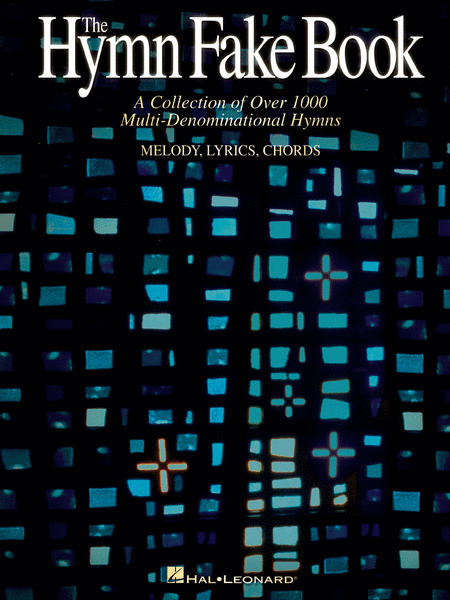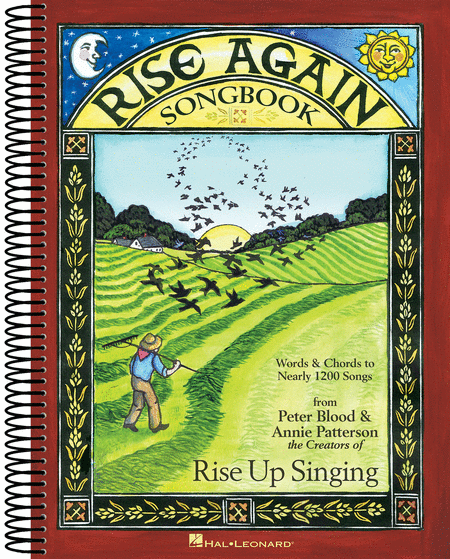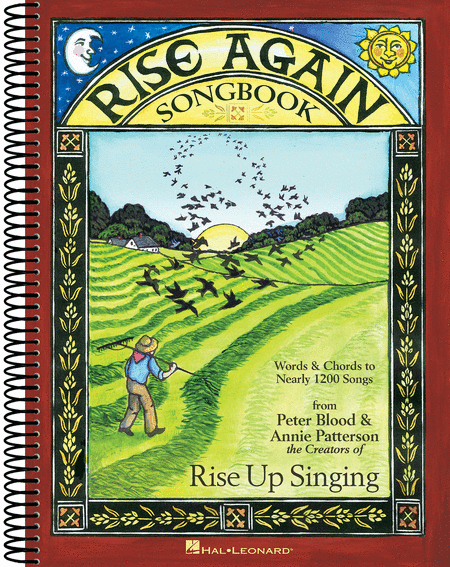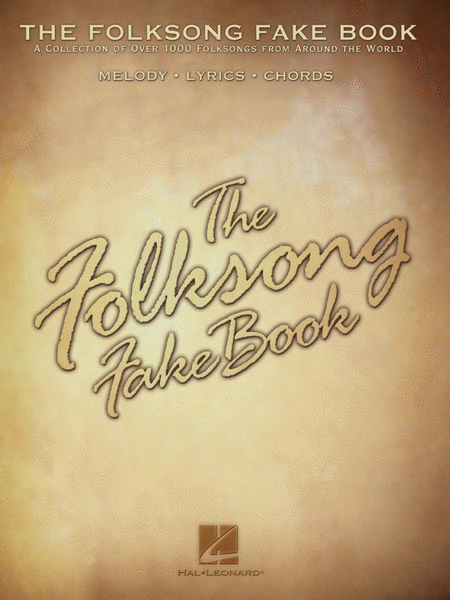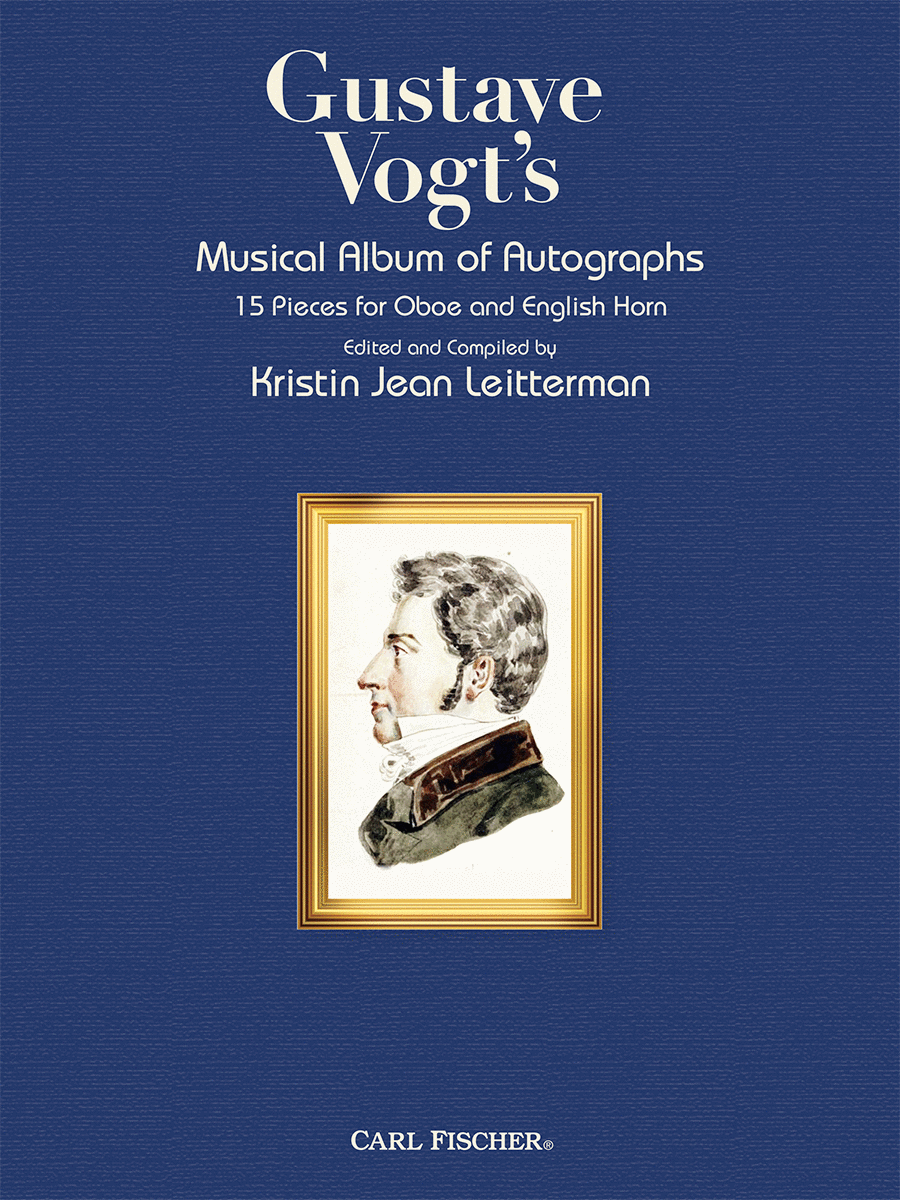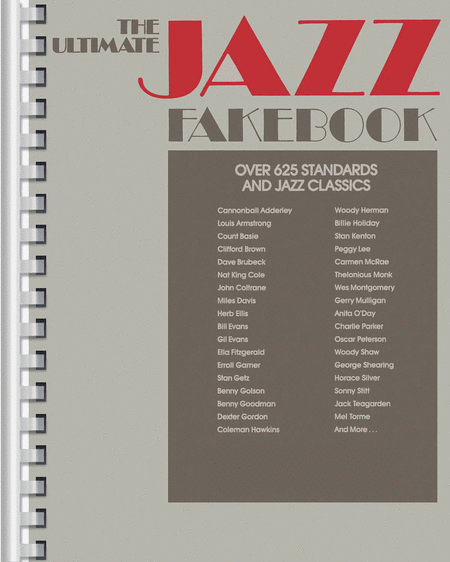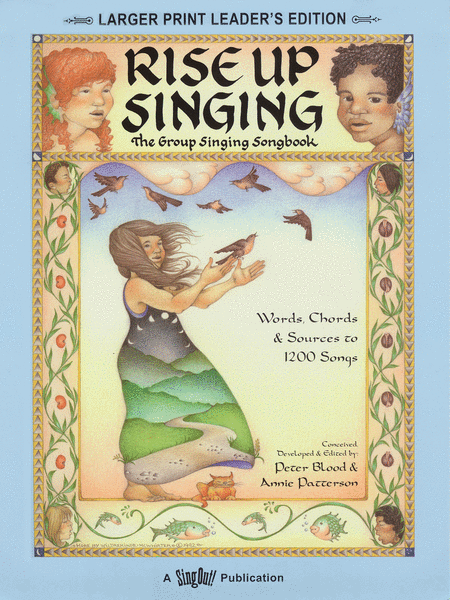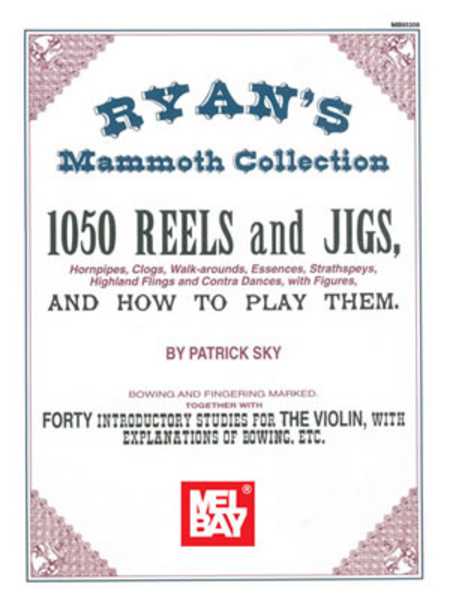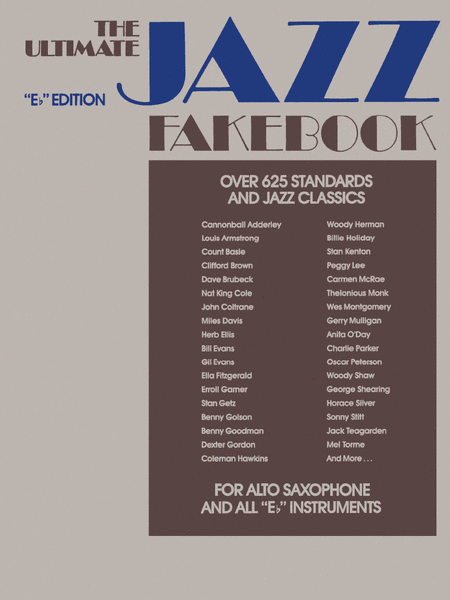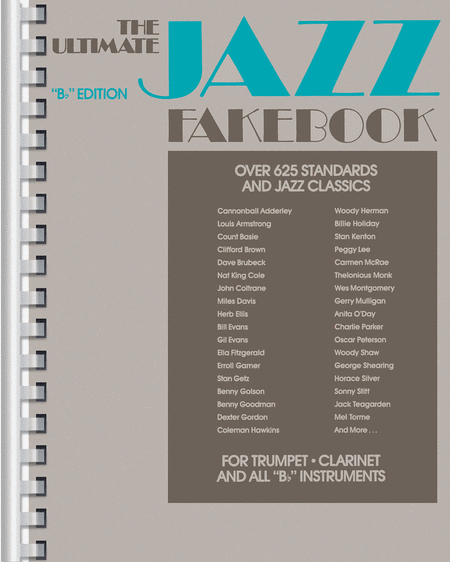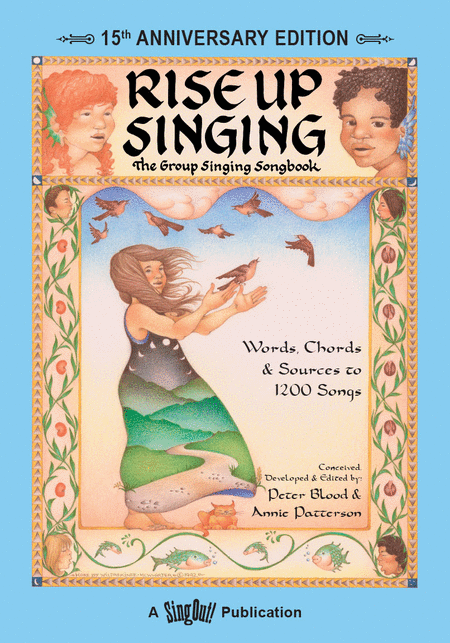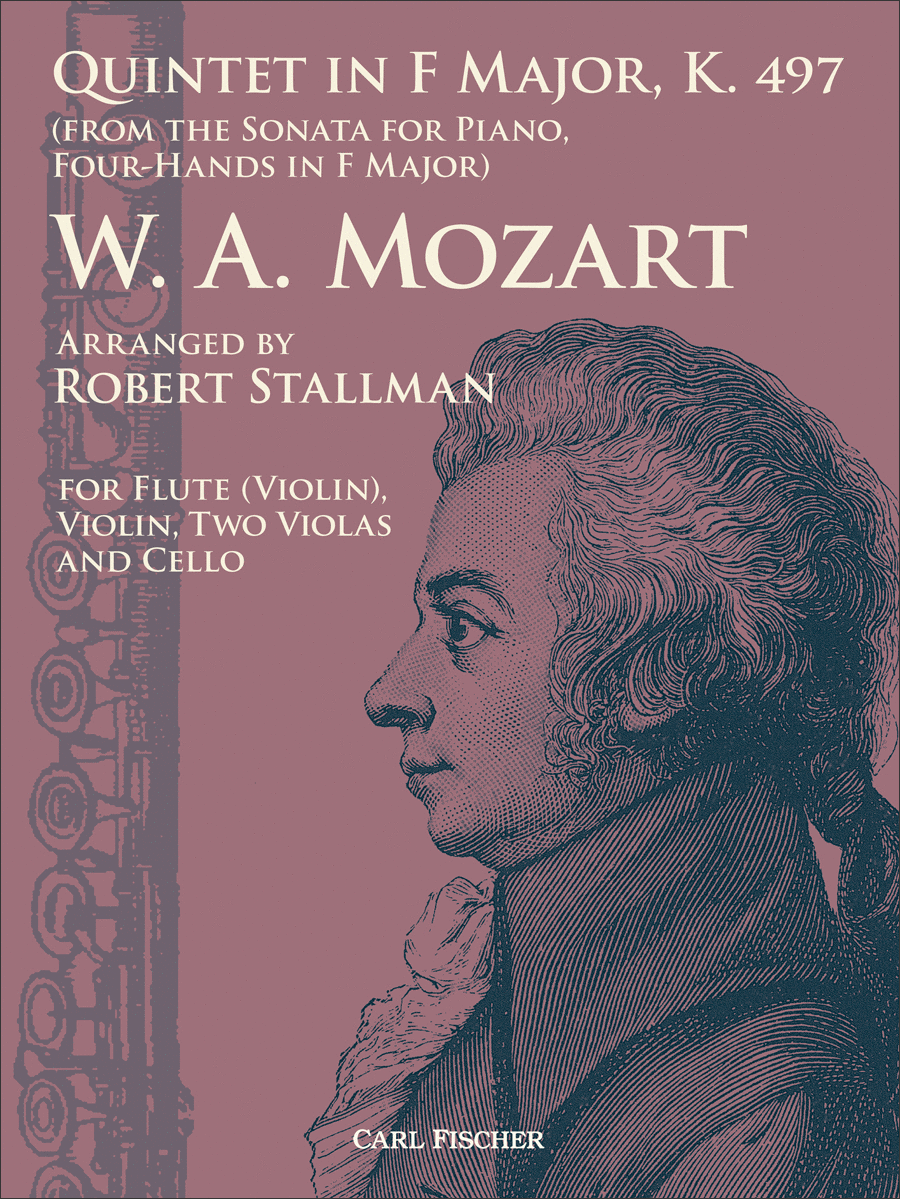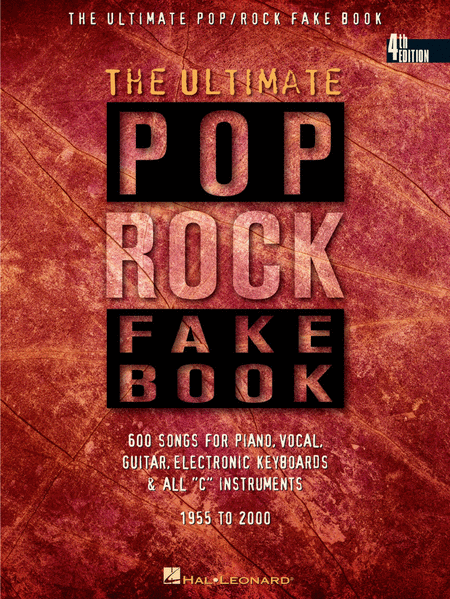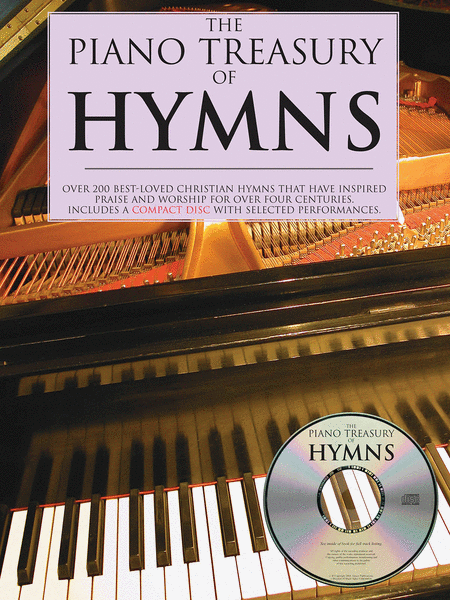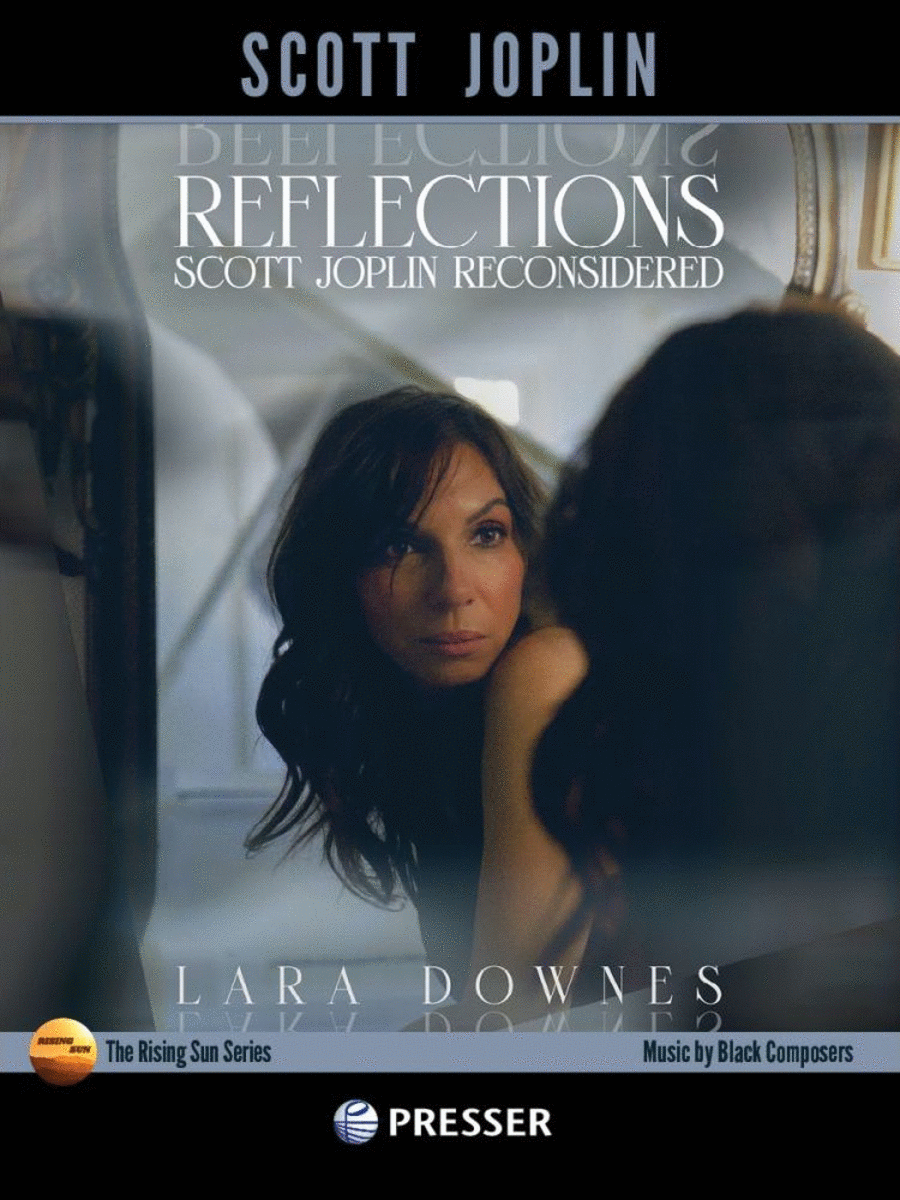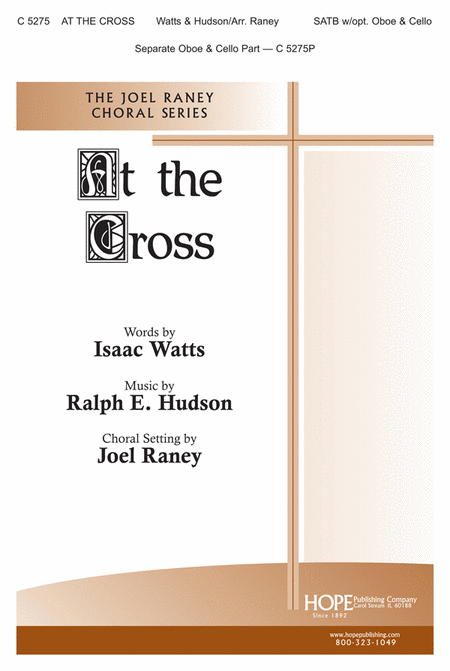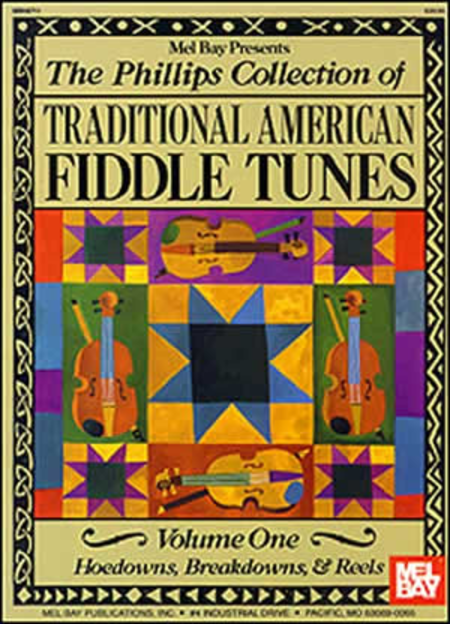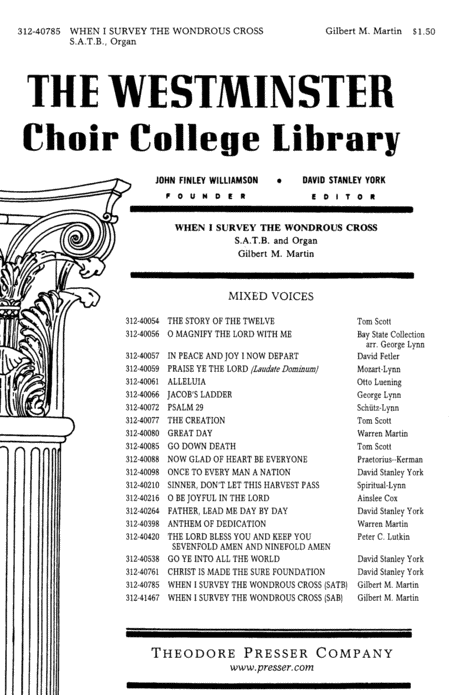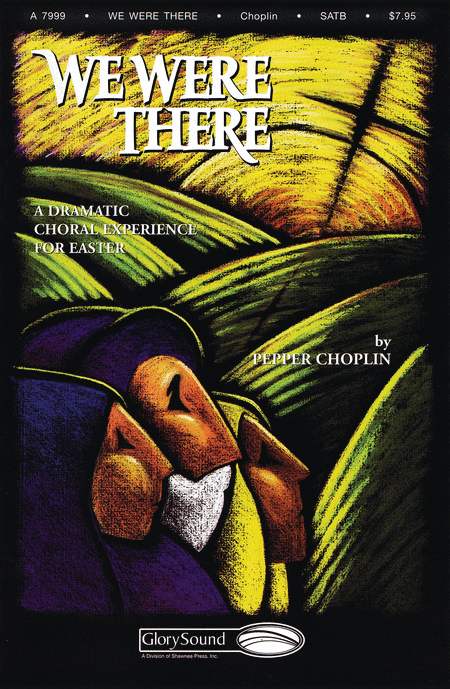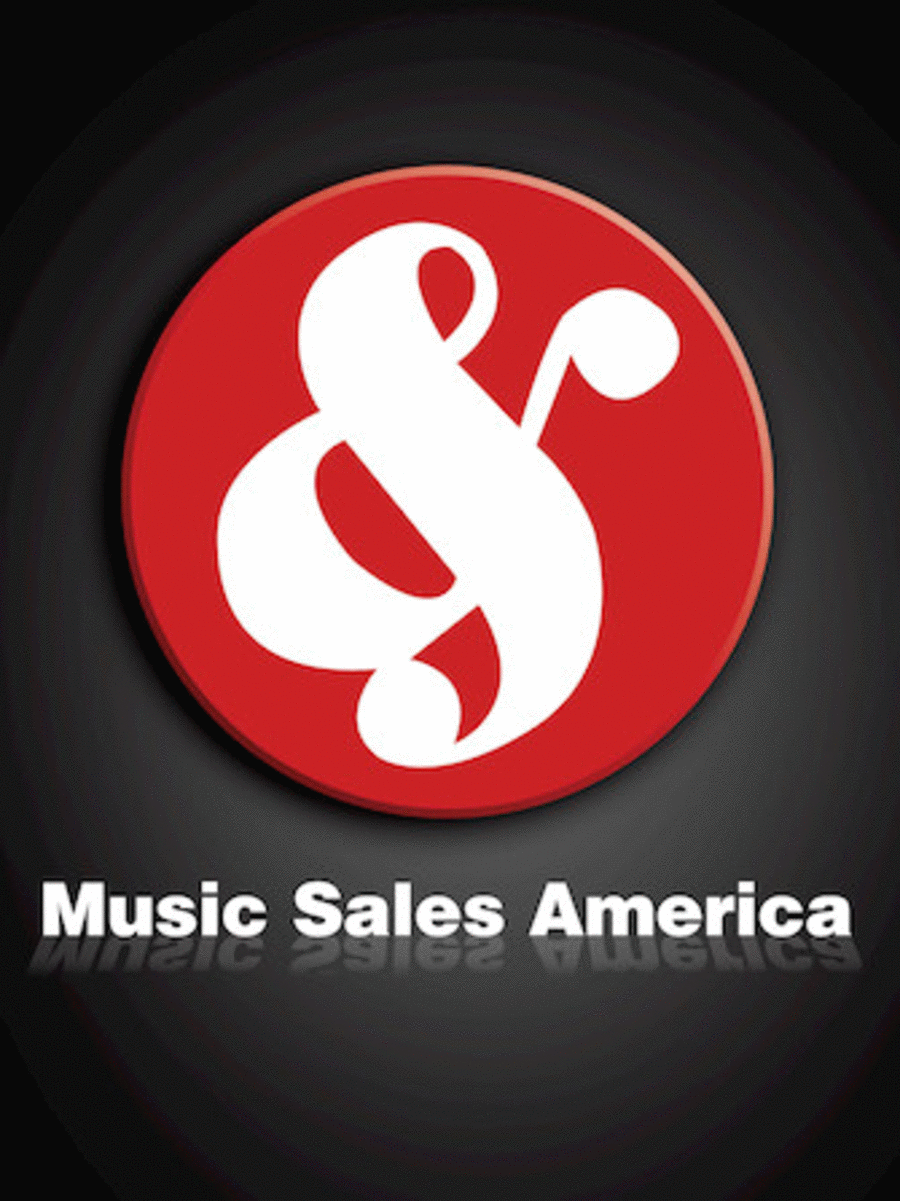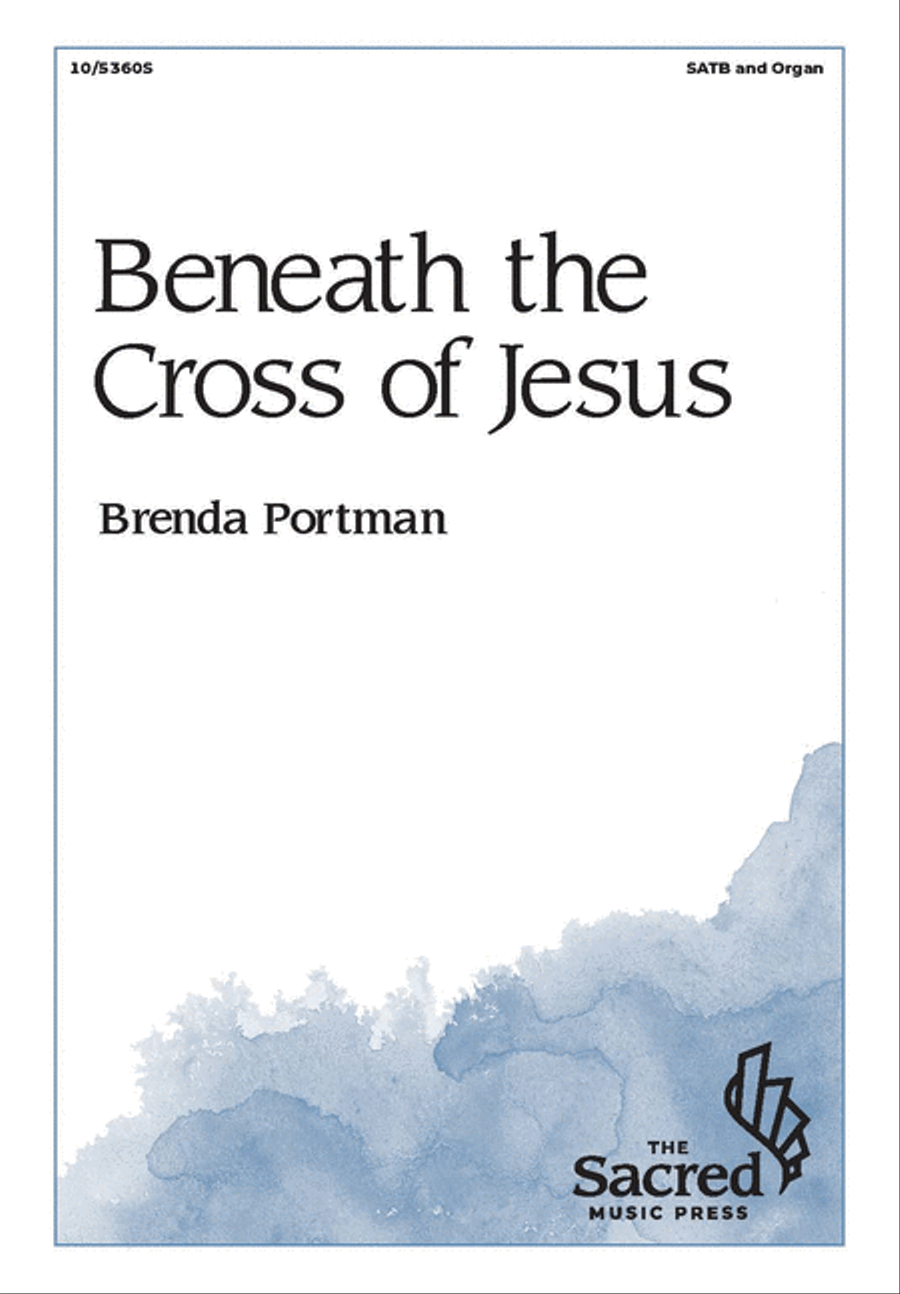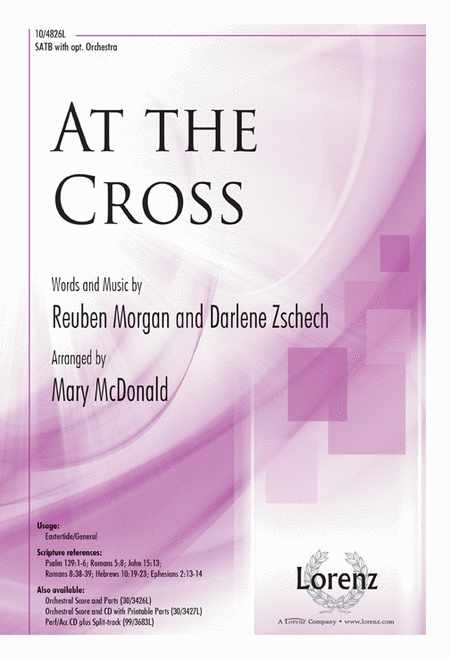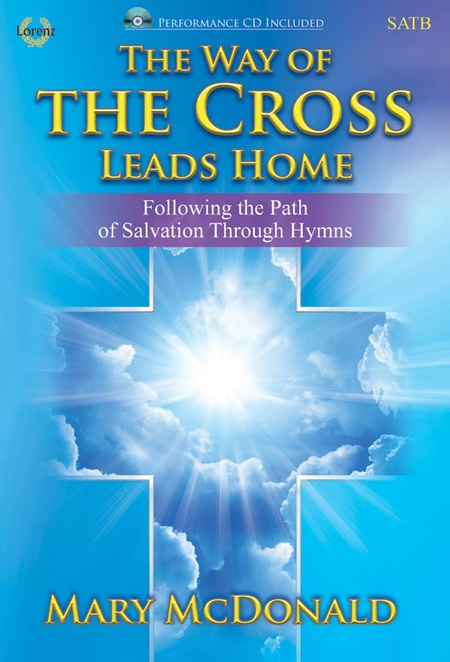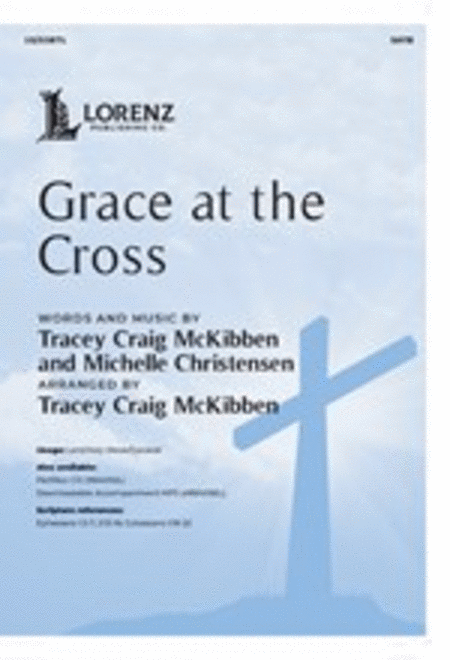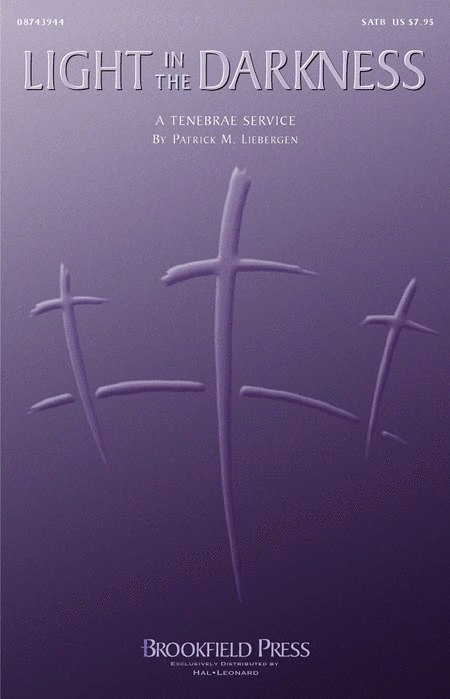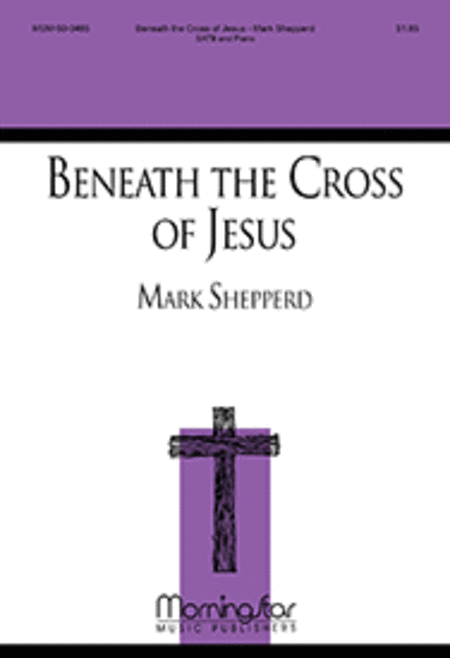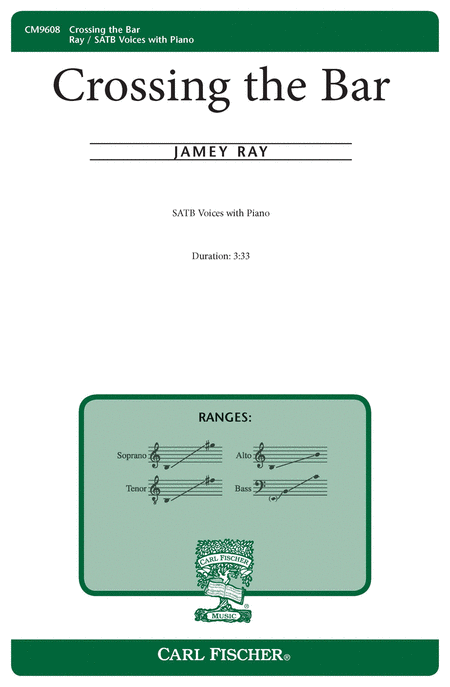|
| The Hymn Fake Book - C Edition
Ligne De Mélodie, Paroles et Accords [Fake Book] - Facile
Hal Leonard
For voice and C instrument. Format: fakebook (spiral bound). With vocal melody, ...(+)
For voice and C
instrument. Format:
fakebook (spiral bound).
With vocal melody,
lyrics, piano
accompaniment, chord
names and leadsheet
notation. Hymn. Series:
Hal Leonard Fake Books.
494 pages. 9x12 inches.
Published by Hal Leonard.
(3)$39.99 - Voir plus => AcheterDélais: 24 hours - In Stock | | | |
| Rise Again Songbook
Paroles et Accords
Hal Leonard
(Words and Chords to Nearly 1200 Songs 9x12 Spiral Bound). Edited by Annie Patte...(+)
(Words and Chords to
Nearly 1200 Songs 9x12
Spiral Bound). Edited by
Annie Patterson and Peter
Blood. For Vocal. Vocal.
Softcover. 304 pages.
Published by Hal Leonard
$39.99 - Voir plus => AcheterDélais: 24 hours - In Stock | | | |
| Rise Again Songbook
Hal Leonard
(Words and Chords to Nearly 1200 Songs Spiral-Bound). Edited by Annie Patterson ...(+)
(Words and Chords to
Nearly 1200 Songs
Spiral-Bound). Edited by
Annie Patterson and Peter
Blood. For Vocal. Vocal.
Softcover. 304 pages.
Published by Hal Leonard
$34.99 - Voir plus => AcheterDélais: 24 hours - In Stock | | | |
| The Folksong Fake Book - C Edition
Fake Book [Fake Book]
Hal Leonard
For voice and C instrument. Format: fakebook. With vocal melody, lyrics and chor...(+)
For voice and C
instrument. Format:
fakebook. With vocal
melody, lyrics and chord
names. Folk. Series: Hal
Leonard Fake Books. 536
pages. 9.6x12 inches.
Published by Hal Leonard.
(10)$34.99 - Voir plus => AcheterDélais: 24 hours - In Stock | | | |
| Gustave Vogt's Musical Album of Autographs
Cor anglais, Piano
Carl Fischer
Chamber Music English Horn, Oboe SKU: CF.WF229 15 Pieces for Oboe and ...(+)
Chamber Music English
Horn, Oboe SKU:
CF.WF229 15 Pieces
for Oboe and English
Horn. Composed by
Gustave Vogt. Edited by
Kristin Jean Leitterman.
Collection - Performance.
32+8 pages. Carl Fischer
Music #WF229. Published
by Carl Fischer Music
(CF.WF229). ISBN
9781491153789. UPC:
680160911288. Intro
duction Gustave Vogt's
Musical Paris Gustave
Vogt (1781-1870) was born
into the Age of
Enlightenment, at the
apex of the
Enlightenment's outreach.
During his lifetime he
would observe its effect
on the world. Over the
course of his life he
lived through many
changes in musical style.
When he was born,
composers such as Mozart
and Haydn were still
writing masterworks
revered today, and
eighty-nine years later,
as he departed the world,
the new realm of
Romanticism was beginning
to emerge with Mahler,
Richard Strauss and
Debussy, who were soon to
make their respective
marks on the musical
world. Vogt himself left
a huge mark on the
musical world, with
critics referring to him
as the grandfather of the
modern oboe and the
premier oboist of Europe.
Through his eighty-nine
years, Vogt would live
through what was perhaps
the most turbulent period
of French history. He
witnessed the French
Revolution of 1789,
followed by the many
newly established
governments, only to die
just months before the
establishment of the
Third Republic in 1870,
which would be the
longest lasting
government since the
beginning of the
revolution. He also
witnessed the
transformation of the
French musical world from
one in which opera
reigned supreme, to one
in which virtuosi,
chamber music, and
symphonic music ruled.
Additionally, he
experienced the
development of the oboe
right before his eyes.
When he began playing in
the late eighteenth
century, the standard
oboe had two keys (E and
Eb) and at the time of
his death in 1870, the
System Six Triebert oboe
(the instrument adopted
by Conservatoire
professor, Georges
Gillet, in 1882) was only
five years from being
developed. Vogt was born
March 18, 1781 in the
ancient town of
Strasbourg, part of the
Alsace region along the
German border. At the
time of his birth,
Strasbourg had been
annexed by Louis XIV, and
while heavily influenced
by Germanic culture, had
been loosely governed by
the French for a hundred
years. Although it is
unclear when Vogt began
studying the oboe and
when his family made its
move to the French
capital, the Vogts may
have fled Strasbourg in
1792 after much of the
city was destroyed during
the French Revolution. He
was without question
living in Paris by 1798,
as he enrolled on June 8
at the newly established
Conservatoire national de
Musique to study oboe
with the school's first
oboe professor,
Alexandre-Antoine
Sallantin (1775-1830).
Vogt's relationship with
the Conservatoire would
span over half a century,
moving seamlessly from
the role of student to
professor. In 1799, just
a year after enrolling,
he was awarded the
premier prix, becoming
the fourth oboist to
achieve this award. By
1802 he had been
appointed repetiteur,
which involved teaching
the younger students and
filling in for Sallantin
in exchange for a free
education. He maintained
this rank until 1809,
when he was promoted to
professor adjoint and
finally to professor
titulaire in 1816 when
Sallantin retired. This
was a position he held
for thirty-seven years,
retiring in 1853, making
him the longest serving
oboe professor in the
school's history. During
his tenure, he became the
most influential oboist
in France, teaching
eighty-nine students,
plus sixteen he taught
while he was professor
adjoint and professor
titulaire. Many of these
students went on to be
famous in their own
right, such as Henri Brod
(1799-1839), Apollon
Marie-Rose Barret
(1804-1879), Charles
Triebert (1810-1867),
Stanislas Verroust
(1814-1863), and Charles
Colin (1832-1881). His
influence stretches from
French to American oboe
playing in a direct line
from Charles Colin to
Georges Gillet
(1854-1920), and then to
Marcel Tabuteau
(1887-1966), the oboist
Americans lovingly
describe as the father of
American oboe playing.
Opera was an important
part of Vogt's life. His
first performing position
was with the
Theatre-Montansier while
he was still studying at
the Conservatoire.
Shortly after, he moved
to the Ambigu-Comique
and, in 1801 was
appointed as first oboist
with the Theatre-Italien
in Paris. He had been in
this position for only a
year, when he began
playing first oboe at the
Opera-Comique. He
remained there until
1814, when he succeeded
his teacher,
Alexandre-Antoine
Sallantin, as soloist
with the Paris Opera, the
top orchestra in Paris at
the time. He played with
the Paris Opera until
1834, all the while
bringing in his current
and past students to fill
out the section. In this
position, he began to
make a name for himself;
so much so that specific
performances were
immortalized in memoirs
and letters. One comes
from a young Hector
Berlioz (1803-1865) after
having just arrived in
Paris in 1822 and
attended the Paris
Opera's performance of
Mehul's Stratonice and
Persuis' ballet Nina. It
was in response to the
song Quand le bien-amie
reviendra that Berlioz
wrote: I find it
difficult to believe that
that song as sung by her
could ever have made as
true and touching an
effect as the combination
of Vogt's instrument...
Shortly after this,
Berlioz gave up studying
medicine and focused on
music. Vogt frequently
made solo and chamber
appearances throughout
Europe. His busiest
period of solo work was
during the 1820s. In 1825
and 1828 he went to
London to perform as a
soloist with the London
Philharmonic Society.
Vogt also traveled to
Northern France in 1826
for concerts, and then in
1830 traveled to Munich
and Stuttgart, visiting
his hometown of
Strasbourg on the way.
While on tour, Vogt
performed Luigi
Cherubini's (1760-1842)
Ave Maria, with soprano
Anna (Nanette) Schechner
(1806-1860), and a
Concertino, presumably
written by himself. As a
virtuoso performer in
pursuit of repertoire to
play, Vogt found himself
writing much of his own
music. His catalog
includes chamber music,
variation sets, vocal
music, concerted works,
religious music, wind
band arrangements, and
pedagogical material. He
most frequently performed
his variation sets, which
were largely based on
themes from popular
operas he had, presumably
played while he was at
the Opera. He made his
final tour in 1839,
traveling to Tours and
Bordeaux. During this
tour he appeared with the
singer Caroline Naldi,
Countess de Sparre, and
the violinist Joseph
Artot (1815-1845). This
ended his active career
as a soloist. His
performance was described
in the Revue et gazette
musicale de Paris as
having lost none of his
superiority over the
oboe.... It's always the
same grace, the same
sweetness. We made a trip
to Switzerland, just by
closing your eyes and
listening to Vogt's oboe.
Vogt was also active
performing in Paris as a
chamber and orchestral
musician. He was one of
the founding members of
the Societe des Concerts
du Conservatoire, a group
established in 1828 by
violinist and conductor
Francois-Antoine Habeneck
(1781-1849). The group
featured faculty and
students performing
alongside each other and
works such as Beethoven
symphonies, which had
never been heard in
France. He also premiered
the groundbreaking
woodwind quintets of
Antonin Reicha
(1770-1836). After his
retirement from the Opera
in 1834 and from the
Societe des Concerts du
Conservatoire in 1842,
Vogt began to slow down.
His final known
performance was of
Cherubini's Ave Maria on
English horn with tenor
Alexis Dupont (1796-1874)
in 1843. He then began to
reflect on his life and
the people he had known.
When he reached his 60s,
he began gathering
entries for his Musical
Album of Autographs.
Autograph Albums Vogt's
Musical Album of
Autographs is part of a
larger practice of
keeping autograph albums,
also commonly known as
Stammbuch or Album
Amicorum (meaning book of
friendship or friendship
book), which date back to
the time of the
Reformation and the
University of Wittenberg.
It was during the
mid-sixteenth century
that students at the
University of Wittenberg
began passing around
bibles for their fellow
students and professors
to sign, leaving messages
to remember them by as
they moved on to the next
part of their lives. The
things people wrote were
mottos, quotes, and even
drawings of their family
coat of arms or some
other scene that meant
something to the owner.
These albums became the
way these young students
remembered their school
family once they had
moved on to another
school or town. It was
also common for the
entrants to comment on
other entries and for the
owner to amend entries
when they learned of
important life details
such as marriage or
death. As the practice
continued, bibles were
set aside for emblem
books, which was a
popular book genre that
featured allegorical
illustrations (emblems)
in a tripartite form:
image, motto, epigram.
The first emblem book
used for autographs was
published in 1531 by
Andrea Alciato
(1492-1550), a collection
of 212 Latin emblem
poems. In 1558, the first
book conceived for the
purpose of the album
amicorum was published by
Lyon de Tournes
(1504-1564) called the
Thesaurus Amicorum. These
books continued to
evolve, and spread to
wider circles away from
universities. Albums
could be found being kept
by noblemen, physicians,
lawyers, teachers,
painters, musicians, and
artisans. The albums
eventually became more
specialized, leading to
Musical Autograph Albums
(or Notestammbucher).
Before this
specialization, musicians
contributed in one form
or another, but our
knowledge of them in
these albums is mostly
limited to individual
people or events. Some
would simply sign their
name while others would
insert a fragment of
music, usually a canon
(titled fuga) with text
in Latin. Canons were
popular because they
displayed the
craftsmanship of the
composer in a limited
space. Composers
well-known today,
including J. S. Bach,
Telemann, Mozart,
Beethoven, Dowland, and
Brahms, all participated
in the practice, with
Beethoven being the first
to indicate an interest
in creating an album only
of music. This interest
came around 1815. In an
1845 letter from Johann
Friedrich Naue to
Heinrich Carl
Breidenstein, Naue
recalled an 1813 visit
with Beethoven, who
presented a book
suggesting Naue to
collect entries from
celebrated musicians as
he traveled. Shortly
after we find Louis Spohr
speaking about leaving on
his grand tour through
Europe in 1815 and of his
desire to carry an album
with entries from the
many artists he would
come across. He wrote in
his autobiography that
his most valuable
contribution came from
Beethoven in 1815.
Spohr's Notenstammbuch,
comprised only of musical
entries, is
groundbreaking because it
was coupled with a
concert tour, allowing
him to reach beyond the
Germanic world, where the
creation of these books
had been nearly
exclusive. Spohr brought
the practice of
Notenstammbucher to
France, and in turn
indirectly inspired Vogt
to create a book of his
own some fifteen years
later. Vogt's Musical
Album of Autographs
Vogt's Musical Album of
Autographs acts as a form
of a memoir, displaying
mementos of musicians who
held special meaning in
his life as well as
showing those with whom
he was enamored from the
younger generation. The
anonymous Pie Jesu
submitted to Vogt in 1831
marks the beginning of an
album that would span
nearly three decades by
the time the final entry,
an excerpt from Charles
Gounod's (1818-1893)
Faust, which premiered in
1859, was submitted.
Within this album we find
sixty-two entries from
musicians whom he must
have known very well
because they were
colleagues at the
Conservatoire, or
composers of opera whose
works he was performing
with the Paris Opera.
Other entries came from
performers with whom he
had performed and some
who were simply passing
through Paris, such as
Joseph Joachim
(1831-1907). Of the
sixty-three total
entries, some are
original, unpublished
works, while others came
from well-known existing
works. Nineteen of these
works are for solo piano,
sixteen utilize the oboe
or English horn, thirteen
feature the voice (in
many different
combinations, including
vocal solos with piano,
and small choral settings
up to one with double
choir), two feature
violin as a solo
instrument, and one even
features the now obscure
ophicleide. The
connections among the
sixty-two contributors to
Vogt's album are
virtually never-ending.
All were acquainted with
Vogt in some capacity,
from long-time
friendships to
relationships that were
created when Vogt
requested their entry.
Thus, while Vogt is the
person who is central to
each of these musicians,
the web can be greatly
expanded. In general, the
connections are centered
around the Conservatoire,
teacher lineages, the
Opera, and performing
circles. The
relationships between all
the contributors in the
album parallel the
current musical world, as
many of these kinds of
relationships still
exist, and permit us to
fantasize who might be
found in an album created
today by a musician of
the same standing. Also
important, is what sort
of entries the
contributors chose to
pen. The sixty-three
entries are varied, but
can be divided into
published and unpublished
works. Within the
published works, we find
opera excerpts, symphony
excerpts, mass excerpts,
and canons, while the
unpublished works include
music for solo piano,
oboe or English horn,
string instruments
(violin and cello), and
voice (voice with piano
and choral). The music
for oboe and English horn
works largely belong in
the unpublished works of
the album. These entries
were most likely written
to honor Vogt. Seven are
for oboe and piano and
were contributed by
Joseph Joachim, Pauline
Garcia Viardot
(1821-1910), Joseph
Artot, Anton Bohrer
(1783-1852), Georges
Onslow (1784-1853),
Desire Beaulieu
(1791-1863), and Narcisse
Girard (1797-1860). The
common thread between
these entries is the
simplicity of the melody
and structure. Many are
repetitive, especially
Beaulieu's entry, which
features a two-note
ostinato throughout the
work, which he even
included in his
signature. Two composers
contributed pieces for
English horn and piano,
and like the previous
oboe entries, are simple
and repetitive. These
were written by Michele
Carafa (1787-1872) and
Louis Clapisson
(1808-1866). There are
two other entries that
were unpublished works
and are chamber music.
One is an oboe trio by
Jacques Halevy
(1799-1862) and the other
is for oboe and strings
(string trio) by J. B.
Cramer (1771-1858). There
are five published works
in the album for oboe and
English horn. There are
three from operas and the
other two from symphonic
works. Ambroise Thomas
(1811-1896) contributed
an excerpt from the
Entr'acte of his opera La
Guerillero, and was
likely chosen because the
oboe was featured at this
moment. Hippolyte Chelard
(1789-1861) also chose to
honor Vogt by writing for
English horn. His entry,
for English horn and
piano, is taken from his
biggest success, Macbeth.
The English horn part was
actually taken from Lady
Macbeth's solo in the
sleepwalking scene.
Vogt's own entry also
falls into this category,
as he entered an excerpt
from Donizetti's Maria di
Rohan. The excerpt he
chose is a duet between
soprano and English horn.
There are two entries
featuring oboe that are
excerpted from symphonic
repertoire. One is a
familiar oboe melody from
Beethoven's Pastoral
Symphony entered by his
first biographer, Anton
Schindler (1796-1864).
The other is an excerpt
from Berlioz's choral
symphony, Romeo et
Juliette. He entered an
oboe solo from the Grand
Fete section of the
piece. Pedagogical
benefit All of these
works are lovely, and fit
within the album
wonderfully, but these
works also are great oboe
and English horn music
for young students. The
common thread between
these entries is the
simplicity of the melody
and structure. Many are
repetitive, especially
Beaulieu's entry, which
features a two-note
ostinato throughout the
work in the piano. This
repetitive structure is
beneficial for young
students for searching
for a short solo to
present at a studio
recital, or simply to
learn. They also work
many technical issues a
young player may
encounter, such as
mastering the rolling
finger to uncover and
recover the half hole.
This is true of Bealieu's
Pensee as well as
Onslow's Andantino.
Berlioz's entry from
Romeo et Juliette
features very long
phrases, which helps with
endurance and helps keep
the air spinning through
the oboe. Some of the
pieces also use various
levels of ornamentation,
from trills to grace
notes, and short
cadenzas. This allows the
student to learn
appropriate ways to
phrase with these added
notes. The chamber music
is a valuable way to
start younger students
with chamber music,
especially the short
quartet by Cramer for
oboe and string trio. All
of these pieces will not
tax the student to learn
a work that is more
advanced, as well as give
them a full piece that
they can work on from
beginning to end in a
couple weeks, instead of
months. Editorial Policy
The works found in this
edition are based on the
manuscript housed at the
Morgan Library in New
York City (call number
Cary 348, V886. A3). When
possible, published
scores were consulted and
compared to clarify pitch
and text. The general
difficulties in creating
an edition of these works
stem from entries that
appear to be hastily
written, and thus omit
complete articulations
and dynamic indications
for all passages and
parts. The manuscript has
been modernized into a
performance edition. The
score order from the
manuscript has been
retained. If an entry
also exists in a
published work, and this
was not indicated on the
manuscript, appropriate
titles and subtitles have
been added tacitly. For
entries that were
untitled, the beginning
tempo marking or
expressive directive has
been added as its title
tacitly. Part names have
been changed from the
original language to
English. If no part name
was present, it was added
tacitly. All scores are
transposing where
applicable. Measure
numbers have been added
at the beginning of every
system. Written
directives have been
retained in the original
language and are placed
relative to where they
appear in the manuscript.
Tempo markings from the
manuscript have been
retained, even if they
were abbreviated, i.e.,
Andte. The barlines,
braces, brackets, and
clefs are modernized. The
beaming and stem
direction has been
modernized. Key
signatures have been
modernized as some of the
flats/sharps do not
appear on the correct
lines or spaces. Time
signatures have been
modernized. In a few
cases, when a time
signature was missing in
the manuscript, it has
been added tacitly.
Triplet and rhythmic
groupings have been
modernized. Slurs, ties,
and articulations
(staccato and accent)
have been modernized.
Slurs, ties, and
articulations have been
added to parallel
passages tacitly.
Courtesy accidentals
found in the manuscript
have been removed, unless
it appeared to be helpful
to the performer. Dynamic
indications from the
manuscript have been
retained, except where
noted. --Kristin
Leitterman.
Introducti
onGustave Vogt’s
Musical ParisGustave Vogt
(1781–1870) was
born into the “Age
of Enlightenment,â€
at the apex of the
Enlightenment’s
outreach. During his
lifetime he would observe
its effect on the world.
Over the course of his
life he lived through
many changes in musical
style. When he was born,
composers such as Mozart
and Haydn were still
writing masterworks
revered today, and
eighty-nine years later,
as he departed the world,
the new realm of
Romanticism was beginning
to emerge with Mahler,
Richard Strauss and
Debussy, who were soon to
make their respective
marks on the musical
world. Vogt himself left
a huge mark on the
musical world, with
critics referring to him
as the “grandfather
of the modern oboeâ€
and the “premier
oboist of
Europe.â€Through his
eighty-nine years, Vogt
would live through what
was perhaps the most
turbulent period of
French history. He
witnessed the French
Revolution of 1789,
followed by the many
newly established
governments, only to die
just months before the
establishment of the
Third Republic in 1870,
which would be the
longest lasting
government since the
beginning of the
revolution. He also
witnessed the
transformation of the
French musical world from
one in which opera
reigned supreme, to one
in which virtuosi,
chamber music, and
symphonic music ruled.
Additionally, he
experienced the
development of the oboe
right before his eyes.
When he began playing in
the late eighteenth
century, the standard
oboe had two keys (E and
Eb) and at the time of
his death in 1870, the
“System Sixâ€
Triébert oboe (the
instrument adopted by
Conservatoire professor,
Georges Gillet, in 1882)
was only five years from
being developed.Vogt was
born March 18, 1781 in
the ancient town of
Strasbourg, part of the
Alsace region along the
German border. At the
time of his birth,
Strasbourg had been
annexed by Louis XIV, and
while heavily influenced
by Germanic culture, had
been loosely governed by
the French for a hundred
years. Although it is
unclear when Vogt began
studying the oboe and
when his family made its
move to the French
capital, the Vogts may
have fled Strasbourg in
1792 after much of the
city was destroyed during
the French Revolution. He
was without question
living in Paris by 1798,
as he enrolled on June 8
at the newly established
Conservatoire national de
Musique to study oboe
with the school’s
first oboe professor,
Alexandre-Antoine
Sallantin
(1775–1830).Vogtâ
€™s relationship with
the Conservatoire would
span over half a century,
moving seamlessly from
the role of student to
professor. In 1799, just
a year after enrolling,
he was awarded the
premier prix, becoming
the fourth oboist to
achieve this award. By
1802 he had been
appointed
répétiteur, which
involved teaching the
younger students and
filling in for Sallantin
in exchange for a free
education. He maintained
this rank until 1809,
when he was promoted to
professor adjoint and
finally to professor
titulaire in 1816 when
Sallantin retired. This
was a position he held
for thirty-seven years,
retiring in 1853, making
him the longest serving
oboe professor in the
school’s history.
During his tenure, he
became the most
influential oboist in
France, teaching
eighty-nine students,
plus sixteen he taught
while he was professor
adjoint and professor
titulaire. Many of these
students went on to be
famous in their own
right, such as Henri Brod
(1799–1839),
Apollon Marie-Rose Barret
(1804–1879),
Charles Triebert
(1810–1867),
Stanislas Verroust
(1814–1863), and
Charles Colin
(1832–1881). His
influence stretches from
French to American oboe
playing in a direct line
from Charles Colin to
Georges Gillet
(1854–1920), and
then to Marcel Tabuteau
(1887–1966), the
oboist Americans lovingly
describe as the
“father of American
oboe playing.â€Opera
was an important part of
Vogt’s life. His
first performing position
was with the
Théâtre-Montansier
while he was still
studying at the
Conservatoire. Shortly
after, he moved to the
Ambigu-Comique and, in
1801 was appointed as
first oboist with the
Théâtre-Italien in
Paris. He had been in
this position for only a
year, when he began
playing first oboe at the
Opéra-Comique. He
remained there until
1814, when he succeeded
his teacher,
Alexandre-Antoine
Sallantin, as soloist
with the Paris Opéra,
the top orchestra in
Paris at the time. He
played with the Paris
Opéra until 1834, all
the while bringing in his
current and past students
to fill out the section.
In this position, he
began to make a name for
himself; so much so that
specific performances
were immortalized in
memoirs and letters. One
comes from a young Hector
Berlioz
(1803–1865) after
having just arrived in
Paris in 1822 and
attended the Paris
Opéra’s
performance of
Mehul’s Stratonice
and Persuis’
ballet Nina. It was in
response to the song
Quand le bien-amié
reviendra that Berlioz
wrote: “I find it
difficult to believe that
that song as sung by her
could ever have made as
true and touching an
effect as the combination
of Vogt’s
instrument…â€
Shortly after this,
Berlioz gave up studying
medicine and focused on
music.Vogt frequently
made solo and chamber
appearances throughout
Europe. His busiest
period of solo work was
during the 1820s. In 1825
and 1828 he went to
London to perform as a
soloist with the London
Philharmonic Society.
Vogt also traveled to
Northern France in 1826
for concerts, and then in
1830 traveled to Munich
and Stuttgart, visiting
his hometown of
Strasbourg on the way.
While on tour, Vogt
performed Luigi
Cherubini’s
(1760–1842) Ave
Maria, with soprano Anna
(Nanette) Schechner
(1806–1860), and a
Concertino, presumably
written by himself. As a
virtuoso performer in
pursuit of repertoire to
play, Vogt found himself
writing much of his own
music. His catalog
includes chamber music,
variation sets, vocal
music, concerted works,
religious music, wind
band arrangements, and
pedagogical material. He
most frequently performed
his variation sets, which
were largely based on
themes from popular
operas he had, presumably
played while he was at
the Opéra.He made his
final tour in 1839,
traveling to Tours and
Bordeaux. During this
tour he appeared with the
singer Caroline Naldi,
Countess de Sparre, and
the violinist Joseph
Artôt
(1815–1845). This
ended his active career
as a soloist. His
performance was described
in the Revue et gazette
musicale de Paris as
having “lost none
of his superiority over
the oboe….
It’s always the
same grace, the same
sweetness. We made a trip
to Switzerland, just by
closing your eyes and
listening to
Vogt’s
oboe.â€Vogt was also
active performing in
Paris as a chamber and
orchestral musician. He
was one of the founding
members of the
Société des
Concerts du
Conservatoire, a group
established in 1828 by
violinist and conductor
François-Antoine
Habeneck
(1781–1849). The
group featured faculty
and students performing
alongside each other and
works such as Beethoven
symphonies, which had
never been heard in
France. He also premiered
the groundbreaking
woodwind quintets of
Antonin Reicha
(1770–1836).After
his retirement from the
Opéra in 1834 and from
the Société des
Concerts du Conservatoire
in 1842, Vogt began to
slow down. His final
known performance was of
Cherubini’s Ave
Maria on English horn
with tenor Alexis Dupont
(1796–1874) in
1843. He then began to
reflect on his life and
the people he had known.
When he reached his 60s,
he began gathering
entries for his Musical
Album of
Autographs.Autograph
AlbumsVogt’s
Musical Album of
Autographs is part of a
larger practice of
keeping autograph albums,
also commonly known as
Stammbuch or Album
Amicorum (meaning book of
friendship or friendship
book), which date back to
the time of the
Reformation and the
University of Wittenberg.
It was during the
mid-sixteenth century
that students at the
University of Wittenberg
began passing around
bibles for their fellow
students and professors
to sign, leaving messages
to remember them by as
they moved on to the next
part of their lives. The
things people wrote were
mottos, quotes, and even
drawings of their family
coat of arms or some
other scene that meant
something to the owner.
These albums became the
way these young students
remembered their school
family once they had
moved on to another
school or town. It was
also common for the
entrants to comment on
other entries and for the
owner to amend entries
when they learned of
important life details
such as marriage or
death.As the practice
continued, bibles were
set aside for emblem
books, which was a
popular book genre that
featured allegorical
illustrations (emblems)
in a tripartite form:
image, motto, epigram.
The first emblem book
used for autographs was
published in 1531 by
Andrea Alciato
(1492–1550), a
collection of 212 Latin
emblem poems. In 1558,
the first book conceived
for the purpose of the
album amicorum was
published by Lyon de
Tournes
(1504–1564) called
the Thesaurus Amicorum.
These books continued to
evolve, and spread to
wider circles away from
universities. Albums
could be found being kept
by noblemen, physicians,
lawyers, teachers,
painters, musicians, and
artisans.The albums
eventually became more
specialized, leading to
Musical Autograph Albums
(or Notestammbücher).
Before this
specialization, musicians
contributed in one form
or another, but our
knowledge of them in
these albums is mostly
limited to individual
people or events. Some
would simply sign their
name while others would
insert a fragment of
music, usually a canon
(titled fuga) with text
in Latin. Canons were
popular because they
displayed the
craftsmanship of the
composer in a limited
space. Composers
well-known today,
including J. S. Bach,
Telemann, Mozart,
Beethoven, Dowland, and
Brahms, all participated
in the practice, with
Beethoven being the first
to indicate an interest
in creating an album only
of music.This interest
came around 1815. In an
1845 letter from Johann
Friedrich Naue to
Heinrich Carl
Breidenstein, Naue
recalled an 1813 visit
with Beethoven, who
presented a book
suggesting Naue to
collect entries from
celebrated musicians as
he traveled. Shortly
after we find Louis Spohr
speaking about leaving on
his “grand
tour†through
Europe in 1815 and of his
desire to carry an album
with entries from the
many artists he would
come across. He wrote in
his autobiography that
his “most valuable
contribution†came
from Beethoven in 1815.
Spohr’s
Notenstammbuch, comprised
only of musical entries,
is groundbreaking because
it was coupled with a
concert tour, allowing
him to reach beyond the
Germanic world, where the
creation of these books
had been nearly
exclusive. Spohr brought
the practice of
Notenstammbücher to
France, and in turn
indirectly inspired Vogt
to create a book of his
own some fifteen years
later.Vogt’s
Musical Album of
AutographsVogt’s
Musical Album of
Autographs acts as a form
of a memoir, displaying
mementos of musicians who
held special meaning in
his life as well as
showing those with whom
he was enamored from the
younger generation. The
anonymous Pie Jesu
submitted to Vogt in 1831
marks the beginning of an
album that would span
nearly three decades by
the time the final entry,
an excerpt from Charles
Gounod’s
(1818–1893) Faust,
which premiered in 1859,
was submitted.Within this
album ... $16.99 - Voir plus => AcheterDélais: 1 to 2 weeks | | | |
| The Ultimate Jazz Fake Book - C edition
Instruments en Do [Fake Book]
Hal Leonard
For C instrument and voice. Format: fakebook (spiral bound). With chord names, v...(+)
For C instrument and
voice. Format: fakebook
(spiral bound). With
chord names, vocal melody
and lyrics. Jazz. Series:
Hal Leonard Fake Books.
448 pages. 9x12 inches.
Published by Hal Leonard.
(7)$49.99 - Voir plus => AcheterDélais: 24 hours - In Stock | | | |
| Rise Up Singing
Paroles et Accords [Partition]
Hal Leonard
The Group Singing Songbook. By Various. Vocal. Size 9.5x12 inches. 281 pages. Pu...(+)
The Group Singing
Songbook. By Various.
Vocal. Size 9.5x12
inches. 281 pages.
Published by Hal Leonard.
(1)$39.99 - Voir plus => AcheterDélais: 24 hours - In Stock | | | |
| Ryan's Mammoth Collection of Fiddle Tunes
Violon [Partition]
Mel Bay
Edited by Patrick Sky. For fiddle. All styles. Level: Multiple Levels. Book. Son...(+)
Edited by Patrick Sky.
For fiddle. All styles.
Level: Multiple Levels.
Book. Songbook. Size
8.75x11.75. 176 pages.
Published by Mel Bay
Pub., Inc.
$29.99 - Voir plus => AcheterDélais: 1 to 2 weeks | | | |
| The Ultimate Jazz Fake Book - Eb Edition
Instruments en Mib [Fake Book]
Hal Leonard
Fakebook for Eb instrument and voice. With vocal melody, lyrics and leadsheet no...(+)
Fakebook for Eb
instrument and voice.
With vocal melody, lyrics
and leadsheet notation.
Series: Hal Leonard Fake
Books. 448 pages.
Published by Hal Leonard.
$49.99 - Voir plus => AcheterDélais: 24 hours - In Stock | | | |
| The Ultimate Jazz Fake Book - Bb edition
Instruments en Sib [Fake Book]
Hal Leonard
Bb Edition. Fake Book (Includes melody line and chords). Size 9x12 inches. 448 ...(+)
Bb Edition. Fake Book
(Includes melody line and
chords). Size 9x12
inches. 448 pages.
Published by Hal Leonard.
(3)$49.00 - Voir plus => AcheterDélais: 24 hours - In Stock | | | |
| Rise Up Singing
Paroles et Accords [Partition]
Hal Leonard
Arranged by Peter Blood, Annie Patterson. Vocal. Size 7.5x10.5 inches. 283 pages...(+)
Arranged by Peter Blood,
Annie Patterson. Vocal.
Size 7.5x10.5 inches. 283
pages. Published by Hal
Leonard.
(1)$34.99 - Voir plus => AcheterDélais: 24 hours - In Stock | | | |
| Quintet in F Major, K. 497
Carl Fischer
Chamber Music Cello, Flute, Viola 1, Viola 2, Violin SKU: CF.MXE219 Compo...(+)
Chamber Music Cello,
Flute, Viola 1, Viola 2,
Violin SKU:
CF.MXE219 Composed by
Wolfgang Amadeus Mozart.
Arranged by Robert
Stallman. Sws.
56+16+16+16+16+12 pages.
Carl Fischer Music
#MXE219. Published by
Carl Fischer Music
(CF.MXE219). ISBN
9781491157794. UPC:
680160916399. 9 x 12
inches. Preface In
1990, during an intense
rehearsal of a Mozart
Quartet transcription for
flute and strings by
Franz Anton Hoffmeister,
at the Marblehead Summer
Music Festival, a
disgruntled violist
friend complained about
HoffmeisterAs awkward
string writing, suddenly
daring me to create my
own arrangement. I
balked. But the following
winterA3despite scruples
about treading on
hallowed groundA3I grew
curious and began to
experiment. Soon I was
hooked on the challenge
of learning to speak
MozartAs language with
conviction. This
fascination, encouraged
by pianist Richard Goode
and other Mozarteans,
would eventually generate
a total of thirty-nine
recreations of Mozart
piano sonatas as works
for flute and strings.
With zero tolerance for
alteration of melodic or
harmonic
materialA3MozartAs friend
Hoffmeister had
regrettably attempted
such
A!improvementsA(r)A3I
always tried to envision
what Mozart himself would
have desired. Many of the
sonatas can be heard as
if they were MozartAs
A!blueprintsA(r) of
imagined chamber works.
Hence my task was to
A!flesh outA(r) the
keyboard versions as
Mozart might have done,
had a commission or
performance opportunity
arisen. I spent hours
pondering how Mozart
might have set these
sonatas in four- or
five-part form, providing
the needed textural or
contrapuntal
enhancements. With
immersion in the
composerAs dialect,
various apt solutions
presented themselves. The
search for the
A!rightA(r) one then
became a most absorbing
study. On the eve of
releasing my BognerAs
CafA recording of
Mozart-Stallman New
Quintets (2006), I
discovered to my delight
that a prominent scholar
had long before endorsed
such an effort. Eric Blom
(1888A+-1959), author of
Mozart (1935), had taken
note of the four-hand
piano works as A!a kind
of keyboard chamber
music.A(r) Regarding
Sonata, K. 497, Mr. Blom
had observed that Mozart
is often dealing with,
not the expected four
voices (one to a hand),
but five. Blom states:
A!The F major Sonata (K.
497) removes us to
another worldA3the world
of the great chamber
music, especially of the
string quintets. Indeed
an arrangement of some
sort for a combination of
instruments would make a
magnificent concert work
of this almost
uncomfortably great piece
of domestic music.A(r)
That Mozart was in 1786
writing for piano duo
from a quintet
perspective makes sense,
as we find him returning
to the quintet form with
keen interest in his last
years, writing four
String Quintets, the
Clarinet Quintet,
rearranging a wind
serenade for String
Quintet, and leaving
several other quintets
incomplete. My
arrangement presented
here is made for flute
and strings but is also
intended for string
quintet. Quintet in F
Major for Flute and
Strings, K. 497, was
completed in 1999 and
performed with the Martin
Quartet in the Czech
Republic prior to
recording it in 2004.
Mozart had finished the
original Sonata in F
Major for Piano,
Four-Hands, K. 497, on
August 1, 1786. It shows
the unmistakable
influence of Figaro,
completed and premiered
exactly three months
prior. As signaled by the
imposing introductory
Adagio, the conception is
on a grand symphonic
scale, all three
movements being richly
developed with
contrapuntal episodes and
an abundance of
marvelously contrasting
textures and themes
throughout. Called A!the
crowning work of its
kindA(r) by Alfred
Einstein, the Sonata is
laden with examples of
MozartAs mercurial
originality. Here we have
a perfect synthesis of
concertante brilliance,
operatic intensity and
intimate dialogue. The
work opens in unison with
a probing, minor-tinged
Adagio, whose question
comes to a pause on the
dominant, before being
answered with jaunty
certainty by the opening
theme of the Allegro di
moltoA3an F-major tune as
sunny and confident as an
aria from Figaro itself.
This movementAs
declamatory A!opera
chorusA(r) persistently
intones its rhythmic
motto over a swirling
scale figure. The amorous
second theme (initially
presented in the first
viola) also seems to be
plucked from Figaro. The
Andante opens with a
heavenly melody, which
takes as its springboard
the Romanza theme from
the Horn Concerto in E
Major, K. 495, written
only five weeks before.
The A!love duetA(r)
between flute and first
viola seems to anticipate
the impassioned
A!duettingA(r) between
violin and viola in the
Andante of the String
Quintet in C Major, K.
515, written about nine
months later. The
ingenious stretto canon
of the AndanteAs middle
section requires the
precision of a Swiss
clock (which its chiming
thirds recall). Affecting
bucolic codettas close
each of the main sections
of the movement. In the
final Allegro, a rondo in
6/8a time, the puckish,
yet aristocratic
character of the opening
theme contrasts with the
bumptious, popular tune
used for the second theme
(heard first in the
violin and then the
flute, over pizzicato
cello). Lilting hymn-like
episodes in three, four-
and finally five-part
counterpoint are
repeatedly interrupted by
startling scale figures
that rise up in furioso
episodes throughout the
movement. As in the
A!Swiss clockA(r) section
of the Andante, Mozart
uses a stretto imitation
treatment with this
tempest theme, thereby
heightening both
intensity and sense of
instability. I am most
grateful to the
adventuresome Martin
Quartet for their warm
support and collaboration
over the years with
several of my
arrangements, and to my
friend Edwin Swanborn for
the original typesetting
of this score. Gratitude
is also due Weekend
Edition, Performance
Today and innumerable
classical stations across
the United States for
their enthusiastic and
repeated airings of my
A!newA(r) Mozart Quintet
endeavorsA3and most of
all, to violist Katherine
Murdock for that dare in
1990. A3Compiled from the
writings of Robert
Stallman by Hannah Woods
Stallman, February 2,
2020.
Preface In 1990,
during an intense
rehearsal of a Mozart
Quartet transcription for
flute and strings by
Franz Anton Hoffmeister,
at the Marblehead Summer
Music Festival, a
disgruntled violist
friend complained about
Hoffmeisteris awkward
string writing, suddenly
daring me to create my
own arrangement. I
balked. But the following
winterodespite scruples
about treading on
hallowed groundoI grew
curious and began to
experiment. Soon I was
hooked on the challenge
of learning to speak
Mozartis language with
conviction. This
fascination, encouraged
by pianist Richard Goode
and other Mozarteans,
would eventually generate
a total of thirty-nine
recreations of Mozart
piano sonatas as works
for flute and strings.
With zero tolerance for
alteration of melodic or
harmonic
materialoMozartis friend
Hoffmeister had
regrettably attempted
such iimprovementsioI
always tried to envision
what Mozart himself would
have desired. Many of the
sonatas can be heard as
if they were Mozartis
iblueprintsi of imagined
chamber works. Hence my
task was to iflesh outi
the keyboard versions as
Mozart might have done,
had a commission or
performance opportunity
arisen. I spent hours
pondering how Mozart
might have set these
sonatas in four- or
five-part form, providing
the needed textural or
contrapuntal
enhancements. With
immersion in the
composeris dialect,
various apt solutions
presented themselves. The
search for the irighti
one then became a most
absorbing study. On the
eve of releasing my
Bogneris CafE recording
of Mozart-Stallman New
Quintets (2006), I
discovered to my delight
that a prominent scholar
had long before endorsed
such an effort. Eric Blom
(1888n1959), author of
Mozart (1935), had taken
note of the four-hand
piano works as ia kind of
keyboard chamber music.i
Regarding Sonata, K. 497,
Mr. Blom had observed
that Mozart is often
dealing with, not the
expected four voices (one
to a hand), but five.
Blom states: iThe F major
Sonata (K. 497) removes
us to another worldothe
world of the great
chamber music, especially
of the string quintets.
Indeed an arrangement of
some sort for a
combination of
instruments would make a
magnificent concert work
of this almost
uncomfortably great piece
of domestic music.i That
Mozart was in 1786
writing for piano duo
from a quintet
perspective makes sense,
as we find him returning
to the quintet form with
keen interest in his last
years, writing four
String Quintets, the
Clarinet Quintet,
rearranging a wind
serenade for String
Quintet, and leaving
several other quintets
incomplete. My
arrangement presented
here is made for flute
and strings but is also
intended for string
quintet. Quintet in F
Major for Flute and
Strings, K. 497, was
completed in 1999 and
performed with the Martin
Quartet in the Czech
Republic prior to
recording it in 2004.
Mozart had finished the
original Sonata in F
Major for Piano,
Four-Hands, K. 497, on
August 1, 1786. It shows
the unmistakable
influence of Figaro,
completed and premiered
exactly three months
prior. As signaled by the
imposing introductory
Adagio, the conception is
on a grand symphonic
scale, all three
movements being richly
developed with
contrapuntal episodes and
an abundance of
marvelously contrasting
textures and themes
throughout. Called ithe
crowning work of its
kindi by Alfred Einstein,
the Sonata is laden with
examples of Mozartis
mercurial originality.
Here we have a perfect
synthesis of concertante
brilliance, operatic
intensity and intimate
dialogue. The work opens
in unison with a probing,
minor-tinged Adagio,
whose question comes to a
pause on the dominant,
before being answered
with jaunty certainty by
the opening theme of the
Allegro di moltooan
F-major tune as sunny and
confident as an aria from
Figaro itself. This
movementis declamatory
iopera chorusi
persistently intones its
rhythmic motto over a
swirling scale figure.
The amorous second theme
(initially presented in
the first viola) also
seems to be plucked from
Figaro. The Andante opens
with a heavenly melody,
which takes as its
springboard the Romanza
theme from the Horn
Concerto in E Major, K.
495, written only five
weeks before. The ilove
dueti between flute and
first viola seems to
anticipate the
impassioned iduettingi
between violin and viola
in the Andante of the
String Quintet in C
Major, K. 515, written
about nine months later.
The ingenious stretto
canon of the Andanteis
middle section requires
the precision of a Swiss
clock (which its chiming
thirds recall). Affecting
bucolic codettas close
each of the main sections
of the movement. In the
final Allegro, a rondo in
6/8+time, the puckish,
yet aristocratic
character of the opening
theme contrasts with the
bumptious, popular tune
used for the second theme
(heard first in the
violin and then the
flute, over pizzicato
cello). Lilting hymn-like
episodes in three, four-
and finally five-part
counterpoint are
repeatedly interrupted by
startling scale figures
that rise up in furioso
episodes throughout the
movement. As in the
iSwiss clocki section of
the Andante, Mozart uses
a stretto imitation
treatment with this
tempest theme, thereby
heightening both
intensity and sense of
instability. I am most
grateful to the
adventuresome Martin
Quartet for their warm
support and collaboration
over the years with
several of my
arrangements, and to my
friend Edwin Swanborn for
the original typesetting
of this score. Gratitude
is also due Weekend
Edition, Performance
Today and innumerable
classical stations across
the United States for
their enthusiastic and
repeated airings of my
inewi Mozart Quintet
endeavorsoand most of
all, to violist Katherine
Murdock for that dare in
1990. oCompiled from the
writings of Robert
Stallman by Hannah Woods
Stallman, February 2,
2020.
Preface In 1990,
during an intense
rehearsal of a Mozart
Quartet transcription for
flute and strings by
Franz Anton Hoffmeister,
at the Marblehead Summer
Music Festival, a
disgruntled violist
friend complained about
Hoffmeister's awkward
string writing, suddenly
daring me to create my
own arrangement. I
balked. But the following
winter--despite scruples
about treading on
hallowed ground--I grew
curious and began to
experiment. Soon I was
hooked on the challenge
of learning to speak
Mozart's language with
conviction. This
fascination, encouraged
by pianist Richard Goode
and other Mozarteans,
would eventually generate
a total of thirty-nine
recreations of Mozart
piano sonatas as works
for flute and strings.
With zero tolerance for
alteration of melodic or
harmonic
material--Mozart's friend
Hoffmeister had
regrettably attempted
such improvements--I
always tried to envision
what Mozart himself would
have desired. Many of the
sonatas can be heard as
if they were Mozart's
blueprints of imagined
chamber works. Hence my
task was to flesh out the
keyboard versions as
Mozart might have done,
had a commission or
performance opportunity
arisen. I spent hours
pondering how Mozart
might have set these
sonatas in four- or
five-part form, providing
the needed textural or
contrapuntal
enhancements. With
immersion in the
composer's dialect,
various apt solutions
presented themselves. The
search for the right one
then became a most
absorbing study. On the
eve of releasing my
Bogner's Cafe recording
of Mozart-Stallman New
Quintets (2006), I
discovered to my delight
that a prominent scholar
had long before endorsed
such an effort. Eric Blom
(1888-1959), author of
Mozart (1935), had taken
note of the four-hand
piano works as a kind of
keyboard chamber music.
Regarding Sonata, K. 497,
Mr. Blom had observed
that Mozart is often
dealing with, not the
expected four voices (one
to a hand), but five.
Blom states: The F major
Sonata (K. 497) removes
us to another world--the
world of the great
chamber music, especially
of the string quintets.
Indeed an arrangement of
some sort for a
combination of
instruments would make a
magnificent concert work
of this almost
uncomfortably great piece
of domestic music. That
Mozart was in 1786
writing for piano duo
from a quintet
perspective makes sense,
as we find him returning
to the quintet form with
keen interest in his last
years, writing four
String Quintets, the
Clarinet Quintet,
rearranging a wind
serenade for String
Quintet, and leaving
several other quintets
incomplete. My
arrangement presented
here is made for flute
and strings but is also
intended for string
quintet. Quintet in F
Major for Flute and
Strings, K. 497, was
completed in 1999 and
performed with the
Martinu Quartet in the
Czech Republic prior to
recording it in 2004.
Mozart had finished the
original Sonata in F
Major for Piano,
Four-Hands, K. 497, on
August 1, 1786. It shows
the unmistakable
influence of Figaro,
completed and premiered
exactly three months
prior. As signaled by the
imposing introductory
Adagio, the conception is
on a grand symphonic
scale, all three
movements being richly
developed with
contrapuntal episodes and
an abundance of
marvelously contrasting
textures and themes
throughout. Called the
crowning work of its kind
by Alfred Einstein, the
Sonata is laden with
examples of Mozart's
mercurial originality.
Here we have a perfect
synthesis of concertante
brilliance, operatic
intensity and intimate
dialogue. The work opens
in unison with a probing,
minor-tinged Adagio,
whose question comes to a
pause on the dominant,
before being answered
with jaunty certainty by
the opening theme of the
Allegro di molto--an
F-major tune as sunny and
confident as an aria from
Figaro itself. This
movement's declamatory
opera chorus persistently
intones its rhythmic
motto over a swirling
scale figure. The amorous
second theme (initially
presented in the first
viola) also seems to be
plucked from Figaro. The
Andante opens with a
heavenly melody, which
takes as its springboard
the Romanza theme from
the Horn Concerto in E<=
Major, K. 495, written
only five weeks before.
The love duet between
flute and first viola
seems to anticipate the
impassioned duetting
between violin and viola
in the Andante of the
String Quintet in C
Major, K. 515, written
about nine months later.
The ingenious stretto
canon of the Andante's
middle section requires
the precision of a Swiss
clock (which its chiming
thirds recall). Affecting
bucolic codettas close
each of the main sections
of the movement. In the
final Allegro, a rondo in
6/8 time, the puckish,
yet aristocratic
character of the opening
theme contrasts with the
bumptious, popular tune
used for the second theme
(heard first in the
violin and then the
flute, over pizzicato
cello). Lilting hymn-like
episodes in three, four-
and finally five-part
counterpoint are
repeatedly interrupted by
startling scale figures
that rise up in furioso
episodes throughout the
movement. As in the Swiss
clock section of the
Andante, Mozart uses a
stretto imitation
treatment with this
tempest theme, thereby
heightening both
intensity and sense of
instability. I am most
grateful to the
adventuresome Martinu
Quartet for their warm
support and collaboration
over the years with
several of my
arrangements, and to my
friend Edwin Swanborn for
the original typesetting
of this score. Gratitude
is also due Weekend
Edition, Performance
Today and innumerable
classical stations across
the United States for
their enthusiastic and
repeated airings of my
new Mozart Quintet
endeavors--and most of
all, to violist Katherine
Murdock for that dare in
1990. --Compiled from the
writings of Robert
Stallman by Hannah Woods
Stallman, February 2,
2020.
PrefaceIn 1990,
during an intense
rehearsal of a Mozart
Quartet transcription for
flute and strings by
Franz Anton Hoffmeister,
at the Marblehead Summer
Music Festival, a
disgruntled violist
friend complained about
Hoffmeister’s
awkward string writing,
suddenly daring me to
create my own
arrangement. I balked.
But the following
winter—despite
scruples about treading
on hallowed
ground—I grew
curious and began to
experiment. Soon I was
hooked on the challenge
of learning to speak
Mozart’s language
with conviction. This
fascination, encouraged
by pianist Richard Goode
and other Mozarteans,
would eventually generate
a total of thirty-nine
recreations of Mozart
piano sonatas as works
for flute and
strings.With zero
tolerance for alteration
of melodic or harmonic
material—Mozartâ�
��™s friend Hoffmeister
had regrettably attempted
such
“improvements�
�—I always tried
to envision what Mozart
himself would have
desired. Many of the
sonatas can be heard as
if they were
Mozart’s
“blueprintsâ€
of imagined chamber
works. Hence my task was
to “flesh
out†the keyboard
versions as Mozart might
have done, had a
commission or performance
opportunity arisen. I
spent hours pondering how
Mozart might have set
these sonatas in four- or
five-part form, providing
the needed textural or
contrapuntal
enhancements. With
immersion in the
composer’s
dialect, various apt
solutions presented
themselves. The search
for the
“right†one
then became a most
absorbing study.On the
eve of releasing my
Bogner’s Café
recording of
Mozart-Stallman New
Quintets (2006), I
discovered to my delight
that a prominent scholar
had long before endorsed
such an effort. Eric Blom
(1888–1959),
author of Mozart (1935),
had taken note of the
four-hand piano works as
“a kind of keyboard
chamber music.â€
Regarding Sonata, K. 497,
Mr. Blom had observed
that Mozart is often
dealing with, not the
expected four voices (one
to a hand), but five.
Blom states: “The F
major Sonata (K. 497)
removes us to another
world—the world of
the great chamber music,
especially of the string
quintets. Indeed an
arrangement of some sort
for a combination of
instruments would make a
magnificent concert work
of this almost
uncomfortably great piece
of domestic music.â€
That Mozart was in 1786
writing for piano duo
from a quintet
perspective makes sense,
as we find him returning
to the quintet form with
keen interest in his last
years, writing four
String Quintets, the
Clarinet Quintet,
rearranging a wind
serenade for String
Quintet, and leaving
several other quintets
incomplete. My
arrangement presented
here is made for flute
and strings but is also
intended for string
quintet.Quintet in F
Major for Flute and
Strings, K. 497, was
completed in 1999 and
performed with the
Martinů Quartet in the
Czech Republic prior to
recording it in 2004.
Mozart had finished the
original Sonata in F
Major for Piano,
Four-Hands, K. 497, on
August 1, 1786. It shows
the unmistakable
influence of Figaro,
completed and premiered
exactly three months
prior. As signaled by the
imposing introductory
Adagio, the conception is
on a grand symphonic
scale, all three
movements being richly
developed with
contrapuntal episodes and
an abundance of
marvelously contrasting
textures and themes
throughout. Called
“the crowning work
of its kind†by
Alfred Einstein, the
Sonata is laden with
examples of
Mozart’s mercurial
originality. Here we have
a perfect synthesis of
concertante brilliance,
operatic intensity and
intimate dialogue.The
work opens in unison with
a probing, minor-tinged
Adagio, whose question
comes to a pause on the
dominant, before being
answered with jaunty
certainty by the opening
theme of the Allegro di
molto—an F-major
tune as sunny and
confident as an aria from
Figaro itself. This
movement’s
declamatory “opera
chorusâ€
persistently intones its
rhythmic motto over a
swirling scale figure.
The amorous second theme
(initially presented in
the first viola) also
seems to be plucked from
Figaro.The Andante opens
with a heavenly melody,
which takes as its
springboard the Romanza
theme from the Horn
Concerto in E≤
Major, K. 495, written
only five weeks before.
The “love
duet†between flute
and first viola seems to
anticipate the
impassioned
“duettingâ€
between violin and viola
in the Andante of the
String Quintet in C
Major, K. 515, written
about nine months later.
The ingenious stretto
canon of the
Andante’s middle
section requires the
precision of a Swiss
clock (which its chiming
thirds recall). Affecting
bucolic codettas close
each of the main sections
of the movement.In the
final Allegro, a rondo in
6/8Â time, the puckish,
yet aristocratic
character of the opening
theme contrasts with the
bumptious, popular tune
used for the second theme
(heard first in the
violin and then the
flute, over pizzicato
cello). Lilting hymn-like
episodes in three, four-
and finally five-part
counterpoint are
repeatedly interrupted by
startling scale figures
that rise up in furioso
episodes throughout the
movement. As in the
“Swiss clockâ€
section of the Andante,
Mozart uses a stretto
imitation treatment with
this tempest theme,
thereby heightening both
intensity and sense of
instability.I am most
grateful to the
adventuresome Martinů
Quartet for their warm
support and collaboration
over the years with
several of my
arrangements, and to my
friend Edwin Swanborn for
the original typesetting
of this score. Gratitude
is also due Weekend
Edition, Performance
Today and innumerable
classical stations across
the United States for
their enthusiastic and
repeated airings of my
“new†Mozart
Quintet
endeavors—and most
of all, to violist
Katherine Murdock for
that dare in
1990.—Compiled
from the writings of
Robert Stallmanby Hannah
Woods Stallman,February
2, 2020. $42.00 - Voir plus => AcheterDélais: 24 hours - In Stock | | | |
| The Ultimate Pop/Rock Fake Book - In C
Instruments en Do [Fake Book]
Hal Leonard
(4th Edition ) For voice and C instrument. Format: fakebook. With vocal melody, ...(+)
(4th Edition ) For voice
and C instrument. Format:
fakebook. With vocal
melody, lyrics and chord
names. Pop rock, rock and
pop. Series: Hal Leonard
Fake Books. 584 pages.
9x12 inches. Published by
Hal Leonard.
(26)$49.99 - Voir plus => AcheterDélais: 24 hours - In Stock | | | |
| The Piano Treasury of Hymns
Piano seul [Partition + CD] - Facile
Music Sales
Edited by Amy Appleby. Collection and examples CD for easy solo piano. Over 200 ...(+)
Edited by Amy Appleby.
Collection and examples
CD for easy solo piano.
Over 200 best-loved
Christian hymns that have
inspired praise and
worship for over four
centuries. Series: Piano
Treasury Series. 392
pages. Published by Music
Sales.
(1)$29.95 - Voir plus => AcheterDélais: 24 hours - In Stock | | | |
| Reflections
Piano seul
Theodore Presser Co.
Scott Joplin Reconsidered. Composed by Scott Joplin (1868-1917). Edited by L...(+)
Scott Joplin
Reconsidered.
Composed by Scott Joplin
(1868-1917). Edited by
Lara
Downes. Collection.
Theodore
Presser Company
#440-40028.
Published by Theodore
Presser
Company
$21.99 - Voir plus => AcheterDélais: 1 to 2 weeks | | | |
| At the Cross
Chorale SATB
SATB [Octavo]
Hope Publishing Company
At the Cross by Ralph E. Hudson. Arranged by Joel Raney. For SATB choir with opt...(+)
At the Cross by Ralph E.
Hudson. Arranged by Joel
Raney. For SATB choir
with optional Oboe and
Cello. Choral music.
General, Lent, Atonement,
Blood, Cross of Christ,
Grace, Love, Mercy,
Sacrifice, Communion,
Sacred. Choral octavo. 12
pages. Published by Hope
Publishing Company
$2.95 - Voir plus => AcheterDélais: 4 to 6 business days | | | |
| The Phillips Collection of Traditional American Fiddle Tunes Vol 1
Violon [Partition]
Mel Bay
by Stacy Phillips. For fiddle. All styles, fiddle tunes. Level: Multiple Levels....(+)
by Stacy Phillips. For
fiddle. All styles,
fiddle tunes. Level:
Multiple Levels. Book.
Solos. Size 8.75x11.75.
268 pages. Published by
Mel Bay Pub., Inc.
(1)$39.99 - Voir plus => AcheterDélais: 1 to 2 weeks | | | |
| When I Survey the Wondrous Cross
Chorale SATB
SATB, Orgue [Octavo]
Theodore Presser Co.
By Gilbert M. Martin. Arranged by Isaac Watts. Text by Isaac Watts. For SATB, Or...(+)
By Gilbert M. Martin.
Arranged by Isaac Watts.
Text by Isaac Watts. For
SATB, Organ. Published by
Theodore Presser Company.
(9)$2.50 $2.375 (- 5%) Voir plus => AcheterDélais: 24 hours - In Stock | | | |
| We Were There
Chorale SATB
SATB
Shawnee Press
By Pepper Choplin, Brant Adams, and Stan Pethel. For SATB Choir (SATB). Shawnee ...(+)
By Pepper Choplin, Brant
Adams, and Stan Pethel.
For SATB Choir (SATB).
Shawnee Press. Choral.
116 pages
$8.95 - Voir plus => AcheterDélais: 24 hours - In Stock | | | |
| Sing Pop a Cappella Book 3 SATB/Piano W/ Audio Download Card
Chorale SATB
SATB, Piano [Partition + Accès audio]
Novello & Co Ltd.
SATB Choir and Piano SKU: HL.14043700 Composed by Various. Arranged by Gi...(+)
SATB Choir and Piano
SKU: HL.14043700
Composed by Various.
Arranged by Gitika
Partington. Choral. Pop &
Rock. Softcover Audio
Online. Composed 2015.
Novello & Co Ltd.
#NOV165110. Published by
Novello & Co Ltd.
(HL.14043700). ISBN
9781783058617. UPC:
888680736491.
9.0x12.0x0.125 inches.
English. Sing Pop A
Cappella is a collection
of a cappella
arrangements of fantastic
pop songs old and new, by
renowned teacher, singer
and director Gitika
Partington . Her
arrangements are used by
choirs across the UK, and
she emphasises that being
able to read music is not
necessary. Rewarding and
enjoyable, Book Three
continues her project to
bring people together
through the power of
song. What's great about
Gitika Partington 's Sing
Pop A Cappella series is
how she understands that
to make great music or to
sing a great song, it's
not necessary to be able
to sight-read. It may be
useful, but she has
learned that there are
other ways to communicate
music, namely through ear
training,repetition and
gesture. Her
arrangements, five of
which appear in this
book, have enabled youth
and community choirs to
spring up across the
country, making singing
truly and universally
accessible.
Included in this book are
wonderfully rich a
cappella arrangements of
Ain't No Sunshine
by Bill Withers,
Black Is The Colour Of My
True Love's Hair, Rick
Astley's Never Gonna Give
You Up, Adele's Rolling
In The Deep and a
huge favourite, Sway
(Quien Sera) . Vocal
scores for these
innovative and enjoyable
arrangements are included
in standard notation,
although Partington
recommends learning by
ear as something equally
beneficial. To aid with
this, the accompanying
download card includes
five tracks of audio for
each song. One features a
full performance
demonstration while the
other four each focus on
either soprano, alto,
tenor or bass. The easy
download of these tracks
makes learning efficient
and fun, as you are able
to listen wherever you
are. The great thing
about a cappella singing
is that it can be done
anywhere, with limited
resources, with members
who don't necessarily
have any musical
training. Partington
has created a book
that can be used by a
cappella choirs who love
pop music that sounds
great and will thrill
audiences. Sing Pop A
Cappella is not just a
songbook, though, it also
includes an
extensive. $17.95 - Voir plus => AcheterDélais: 24 hours - In Stock | | | |
| Beneath the Cross of Jesus
Chorale SATB
SATB, Orgue
Sacred Music Press
Composed by Brenda Portman. Choral. Sacred Anthem, Eastertide. Octavo. Sacred ...(+)
Composed by Brenda
Portman.
Choral. Sacred Anthem,
Eastertide. Octavo.
Sacred
Music Press #10/5360S.
Published by Sacred Music
Press
$2.75 - Voir plus => AcheterDélais: 1 to 2 weeks | | | |
| At the Cross
Chorale SATB
SATB, Piano [Octavo]
Lorenz Publishing Company
Sacred Anthem, Eastertide, General. Octavo. Lorenz Publishing Company #10/4826...(+)
Sacred Anthem,
Eastertide, General.
Octavo. Lorenz Publishing
Company #10/4826L.
Published by Lorenz
Publishing Company
(LO.10-4826L).
$2.95 - Voir plus => AcheterDélais: 24 hours - In Stock | | | |
| The Way of the Cross Leads Home - SATB Score with CD
Chorale SATB
SATB, Piano [Partition + CD]
Lorenz Publishing Company
(Following the Path of Salvation Through Hymns). By Mary Mcdonald. Arranged by J...(+)
(Following the Path of
Salvation Through Hymns).
By Mary Mcdonald.
Arranged by Jean Anne
Shafferman. For SATB
choir, piano (with
optional orchestration).
Cantatas. Holy Week,
Eastertide, Sacred.
Choral score and
performance CD. Published
by Lorenz Publishing
Company
$16.95 - Voir plus => AcheterDélais: 1 to 2 weeks | | | |
| Grace at the Cross
Chorale SATB
SATB, Piano
Lorenz Publishing Company
Composed by Tracey Craig McKibben. Arranged by Michelle Christensen. Choral. ...(+)
Composed by Tracey Craig
McKibben. Arranged by
Michelle Christensen.
Choral.
Sacred Anthem, General,
Holy
Week, Lent. Octavo.
Lorenz
Publishing Company
#10/5387L.
Published by Lorenz
Publishing Company
$2.95 - Voir plus => AcheterDélais: 1 to 2 weeks | | | |
| Light in the Darkness
Chorale SATB
SATB
Brookfield Press
By Patrick M. Liebergen. (SATB). Brookfield Easter Choral. Sacred. 88 pages. Pu...(+)
By Patrick M. Liebergen.
(SATB). Brookfield Easter
Choral. Sacred. 88 pages.
Published by Brookfield
Press.
$9.95 - Voir plus => AcheterDélais: 24 hours - In Stock | | | |
| Beneath the Cross of Jesus
Chorale SATB
SATB, Piano - Facile
MorningStar Music Publishers
By Mark Shepperd. For SATB choir, piano accompaniment. Lent, Commitment/Disciple...(+)
By Mark Shepperd. For
SATB choir, piano
accompaniment. Lent,
Commitment/Discipleship.
Moderately Easy.
Published by MorningStar
Music Publishers
$1.85 - Voir plus => AcheterDélais: 1 to 2 weeks | | | |
| Crossing the Bar
Chorale SATB
SATB, Piano
Carl Fischer
Choral SATB choir, piano SKU: CF.CM9608 Composed by Jamey Ray. Fold. Perf...(+)
Choral SATB choir, piano
SKU: CF.CM9608
Composed by Jamey Ray.
Fold. Performance. 12
pages. Duration 3
minutes, 33 seconds. Carl
Fischer Music #CM9608.
Published by Carl Fischer
Music (CF.CM9608).
ISBN 9781491154304.
UPC: 680160912803. 6.875
x 10.5 inches. Key: E
major. English. Alfred,
Lord Tennyson
(1809-1892). The
beauty in Alfred, Lord
Tennysons poem is
reflected by the music
with the use of text
painting. The piano
creates the sound of
moving water in m. 19,
providing the first
instance of text
painting. When the men
enter, they continue this
idea of the ocean tide
while the descent into
the word deep in m. 27
gives another instance of
text painting. Take
advantage of the minor
second suspension on the
word dark in m. 38 in
order to achieve a
feeling of suspense. The
entrance at m. 41 is
full, and while still
minor, the text gives us
hope for a change. The
change comes in m. 45
with the staggered
entrances creating a
sense of building and
ascent until the climax
of this moment at m. 47
on the word embark, which
is to be an ascent to
Heaven. The melody moves
between voice parts, even
as early as m. 14 where
the altos have the melody
for only a single
measure; it is then
handed back to the
sopranos. From mm. 5764,
the altos trade the
melody back and forth
with the sopranos. Take
note that the alto melody
should be brought out,
but the line does not
actually begin until the
word when. Lastly, be
intentional with syllabic
stress (no two eighth
notes or quarter notes
alike) and to give
direction to any note
longer than a quarter. I
hope you enjoy learning
and performing
Crossing the Bar
as much as I enjoyed
writing it. ~Jamey
Ray.
The beauty in
Alfred, Lord Tennysonas
poem is reflected by the
music with the use of
text painting. The piano
creates the sound of
moving water in m.A 19,
providing the first
instance of text
painting. When the men
enter, they continue this
idea of the ocean tide
while the descent into
the word adeepa in m. 27
gives another instance of
text painting. Take
advantage of the minor
second suspension on the
word adarka in m. 38 in
order to achieve a
feeling of suspense. The
entrance at m. 41 is
full, and while still
minor, the text gives us
hope for a change. The
change comes in m. 45
with the staggered
entrances creating a
sense of building and
ascent until the climax
of this moment at m. 47
on the word aembark,a
which is to be an ascent
to Heaven. The melody
moves between voice
parts, even as early as
m. 14 where the altos
have the melody for only
a single measure; it is
then handed back to the
sopranos. From mm. 57a64,
the altos trade the
melody back and forth
with the sopranos. Take
note that the alto melody
should be brought out,
but the line does not
actually begin until the
word awhen.a Lastly, be
intentional with syllabic
stress (no two eighth
notes or quarter notes
alike) and to give
direction to any note
longer than a quarter. I
hope you enjoy learning
and performing
Crossing the Bar
as much as I enjoyed
writing it. ~Jamey
Ray.
The beauty in
Alfred, Lord Tennyson's
poem is reflected by the
music with the use of
text painting. The piano
creates the sound of
moving water in m. 19,
providing the first
instance of text
painting. When the men
enter, they continue this
idea of the ocean tide
while the descent into
the word deep in m. 27
gives another instance of
text painting. Take
advantage of the minor
second suspension on the
word dark in m. 38 in
order to achieve a
feeling of suspense. The
entrance at m. 41 is
full, and while still
minor, the text gives us
hope for a change. The
change comes in m. 45
with the staggered
entrances creating a
sense of building and
ascent until the climax
of this moment at m. 47
on the word embark, which
is to be an ascent to
Heaven. The melody moves
between voice parts, even
as early as m. 14 where
the altos have the melody
for only a single
measure; it is then
handed back to the
sopranos. From mm. 57-64,
the altos trade the
melody back and forth
with the sopranos. Take
note that the alto melody
should be brought out,
but the line does not
actually begin until the
word when. Lastly, be
intentional with syllabic
stress (no two eighth
notes or quarter notes
alike) and to give
direction to any note
longer than a quarter. I
hope you enjoy learning
and performing
Crossing the Bar
as much as I enjoyed
writing it. ~Jamey
Ray.
The beauty in
Alfred, Lord Tennyson's
poem is reflected by the
music with the use of
text painting. The piano
creates the sound of
moving water in m. 19,
providing the first
instance of text
painting. When the men
enter, they continue this
idea of the ocean tide
while the descent into
the word deep in m. 27
gives another instance of
text painting. Take
advantage of the minor
second suspension on the
word dark in m. 38 in
order to achieve a
feeling of suspense. The
entrance at m. 41 is
full, and while still
minor, the text gives us
hope for a change. The
change comes in m. 45
with the staggered
entrances creating a
sense of building and
ascent until the climax
of this moment at m. 47
on the word embark, which
is to be an ascent to
Heaven. The melody moves
between voice parts, even
as early as m. 14 where
the altos have the melody
for only a single
measure; it is then
handed back to the
sopranos. From mm. 57-64,
the altos trade the
melody back and forth
with the sopranos. Take
note that the alto melody
should be brought out,
but the line does not
actually begin until the
word when. Lastly, be
intentional with syllabic
stress (no two eighth
notes or quarter notes
alike) and to give
direction to any note
longer than a quarter. I
hope you enjoy learning
and performing Crossing
the Bar as much as I
enjoyed writing it.
~Jamey Ray.
The beauty
in Alfred, Lord
Tennyson’s poem is
reflected by the music
with the use of text
painting. The piano
creates the sound of
moving water in m.Â
19, providing the first
instance of text
painting. When the men
enter, they continue this
idea of the ocean tide
while the descent into
the word
“deep†in m.
27 gives another instance
of text painting.Take
advantage of the minor
second suspension on the
word “darkâ€
in m. 38 in order to
achieve a feeling of
suspense. The entrance at
m. 41 is full, and while
still minor, the text
gives us hope for a
change. The change comes
in m. 45 with the
staggered entrances
creating a sense of
building and ascent until
the climax of this moment
at m. 47 on the word
“embark,â€
which is to be an ascent
to Heaven.The melody
moves between voice
parts, even as early as
m. 14 where the altos
have the melody for only
a single measure; it is
then handed back to the
sopranos. From mm.
57–64, the altos
trade the melody back and
forth with the sopranos.
Take note that the alto
melody should be brought
out, but the line does
not actually begin until
the word
“when.â€Lastly
, be intentional with
syllabic stress (no two
eighth notes or quarter
notes alike) and to give
direction to any note
longer than a quarter.I
hope you enjoy learning
and performing Crossing
the Bar as much as I
enjoyed writing it.~Jamey
Ray. $2.50 - Voir plus => AcheterDélais: 1 to 2 weeks | | |
|
